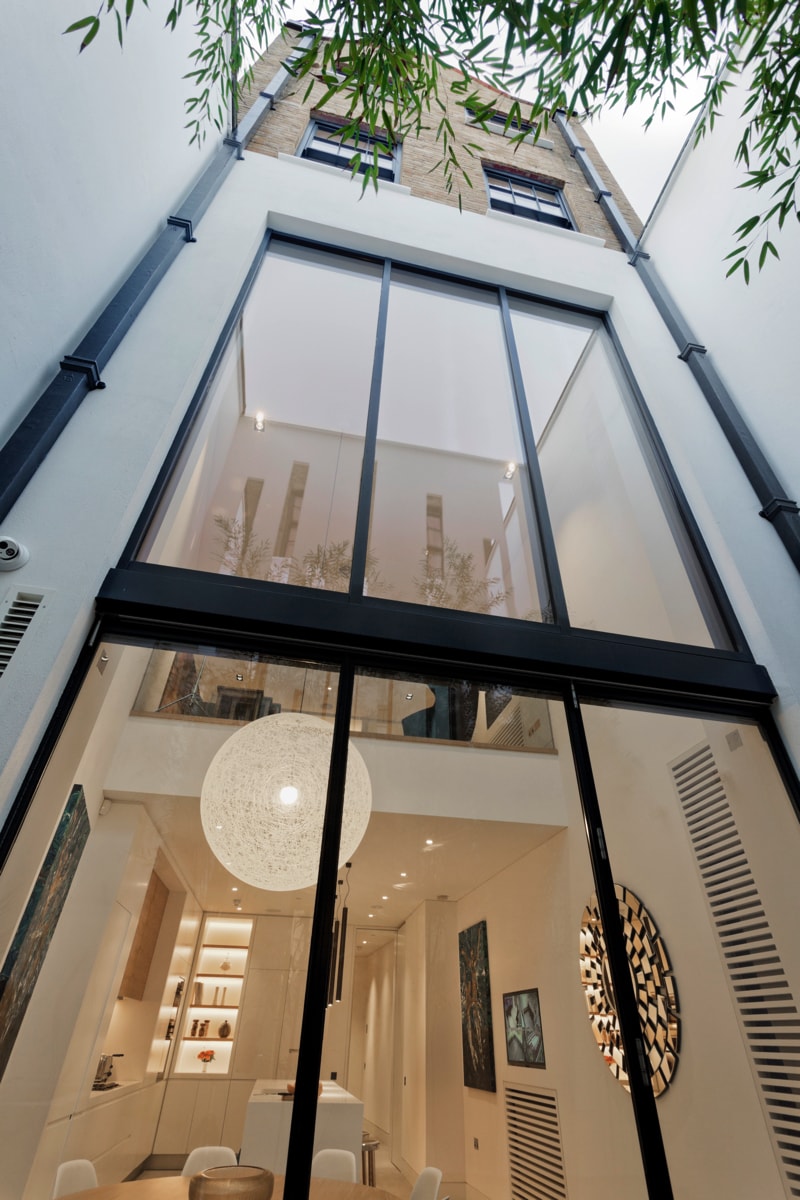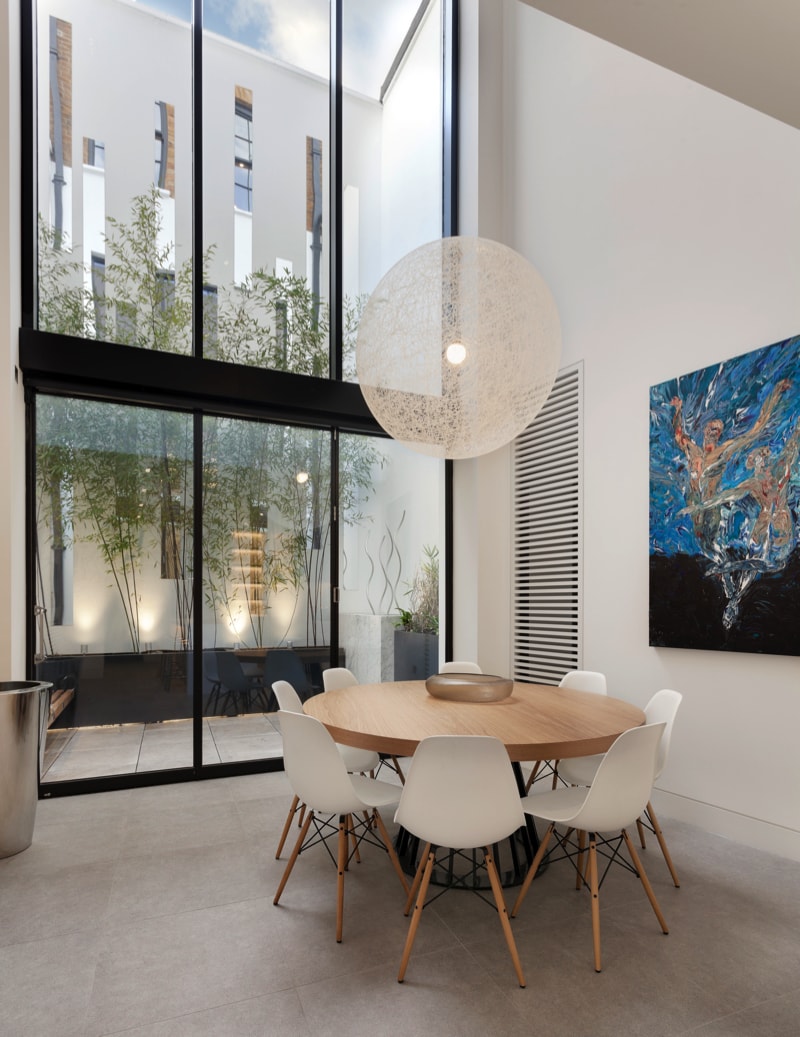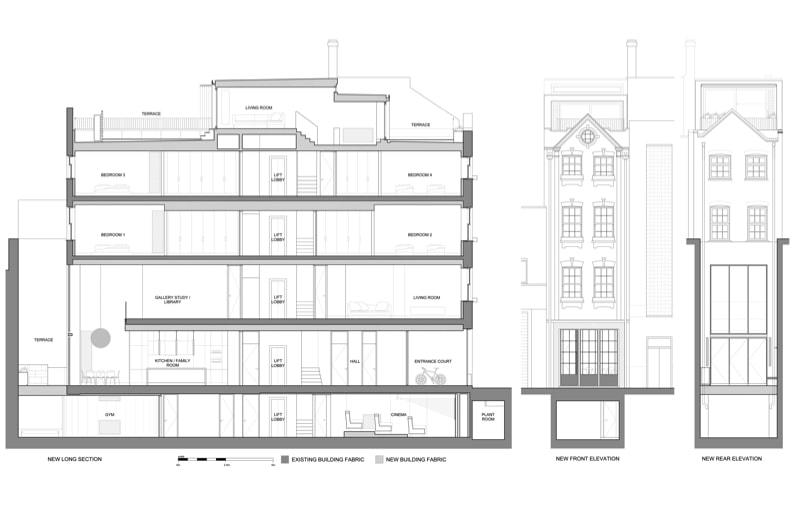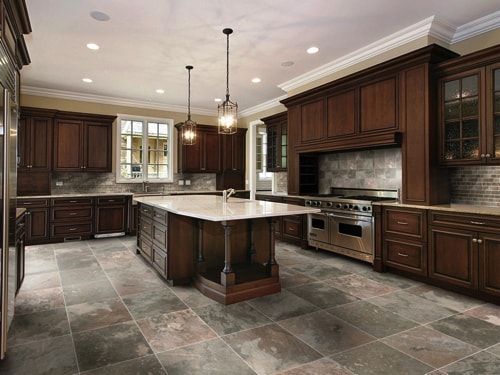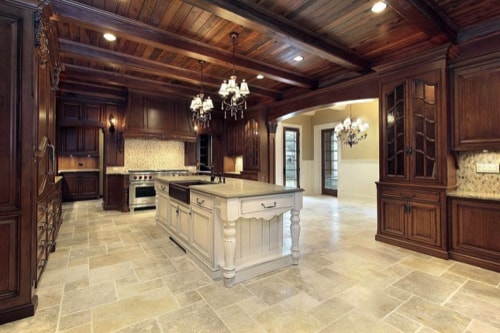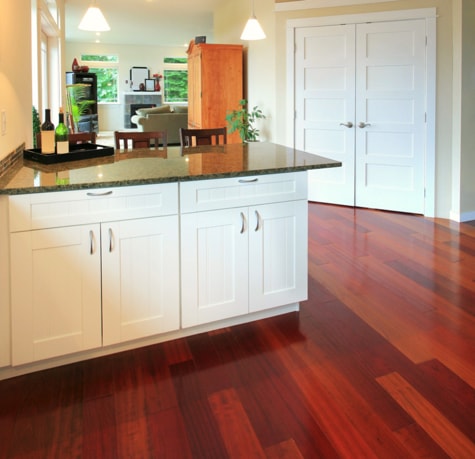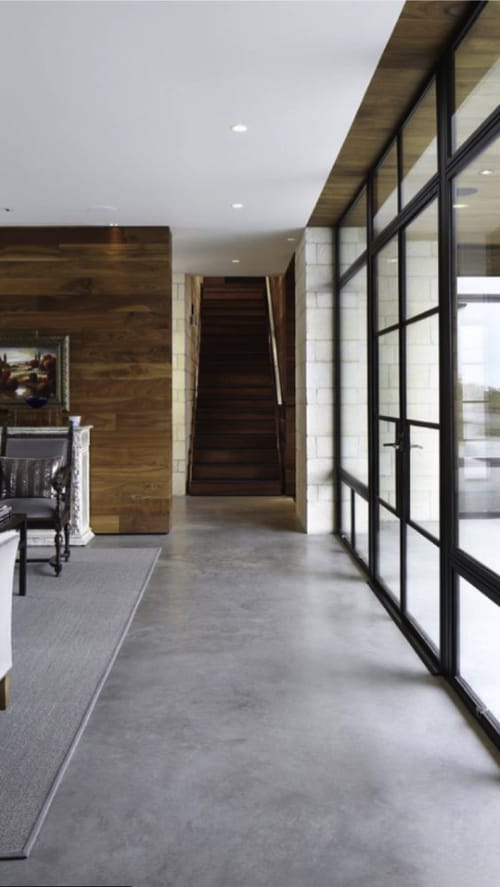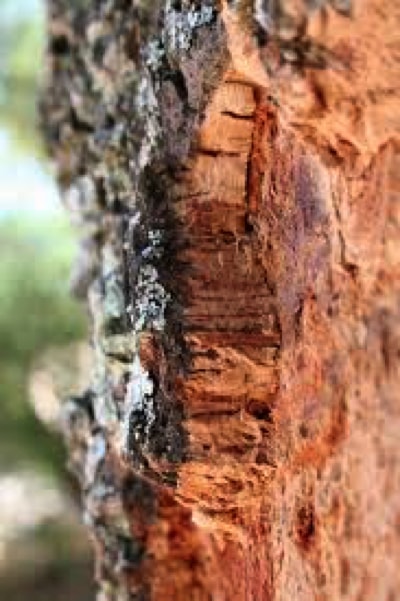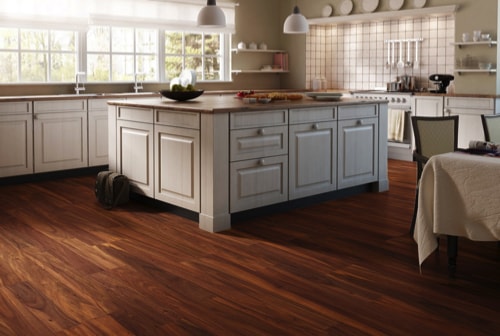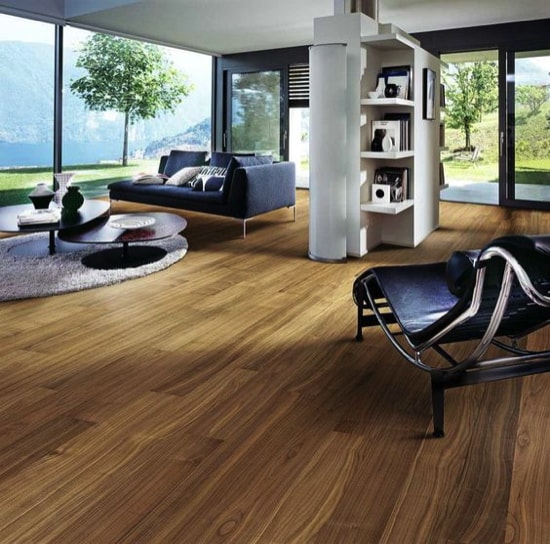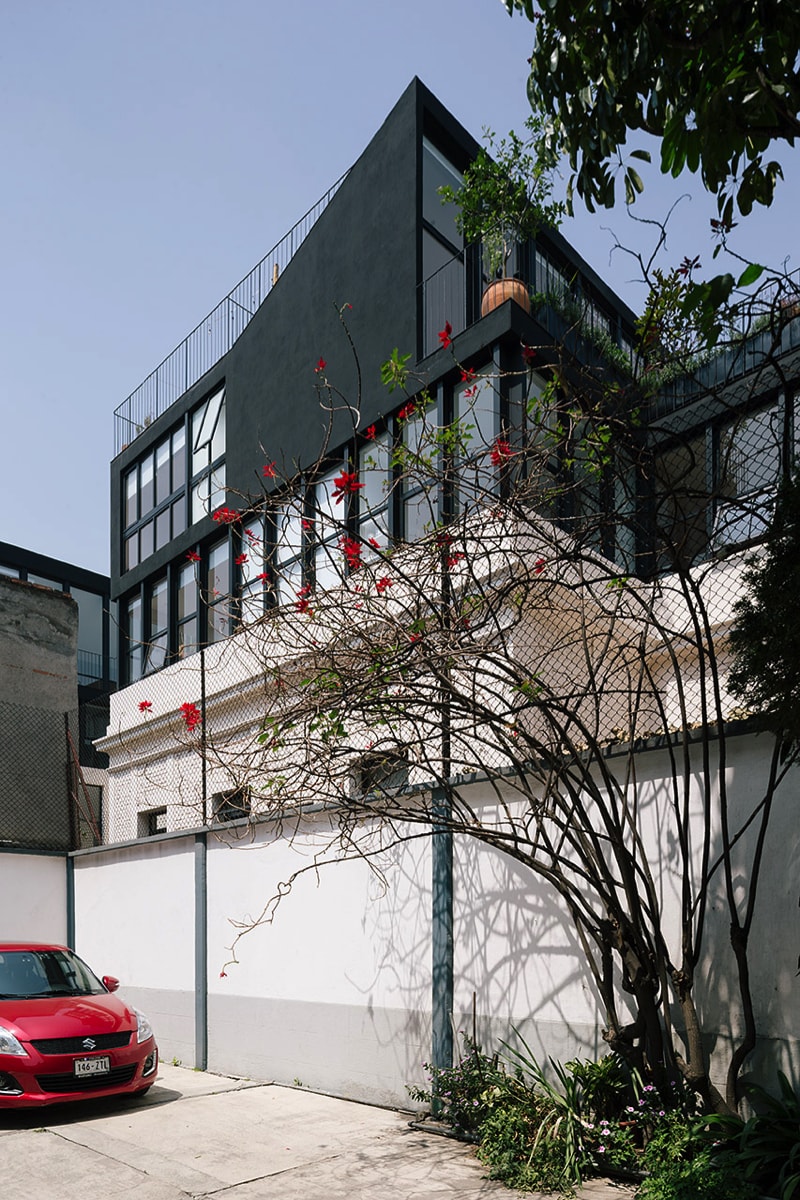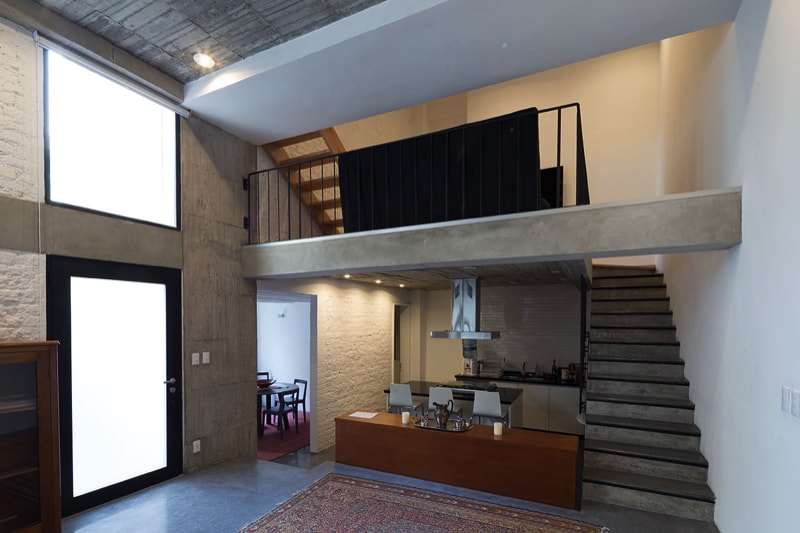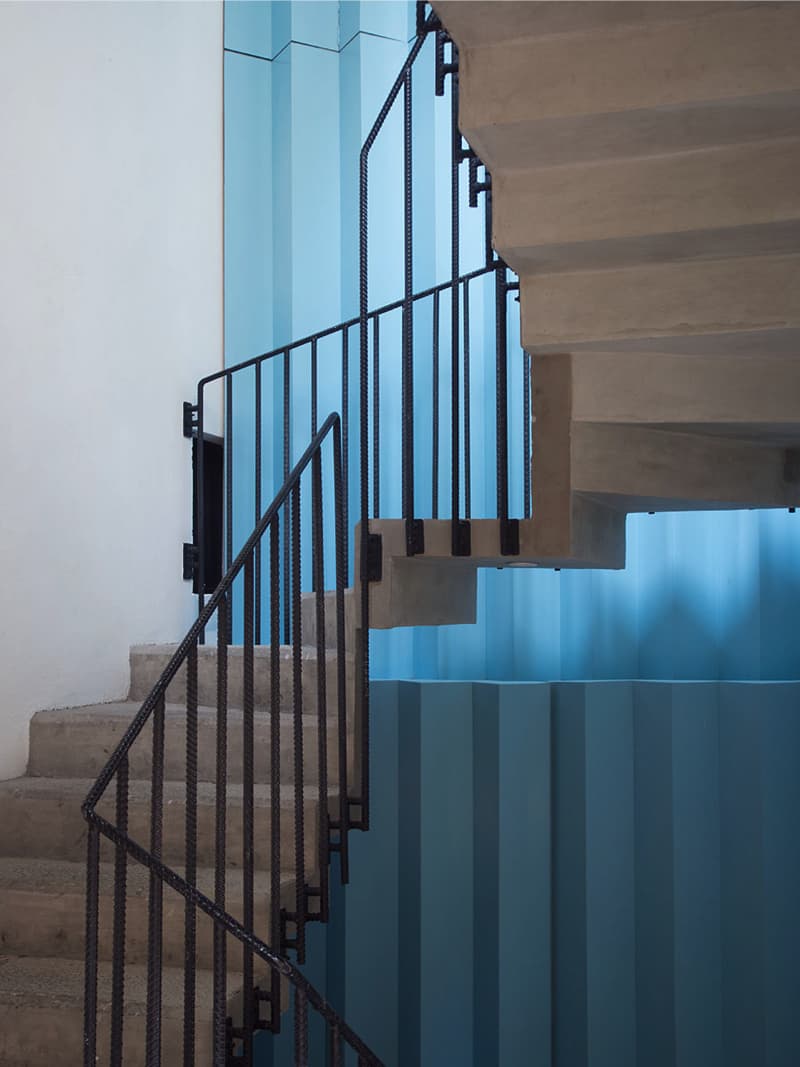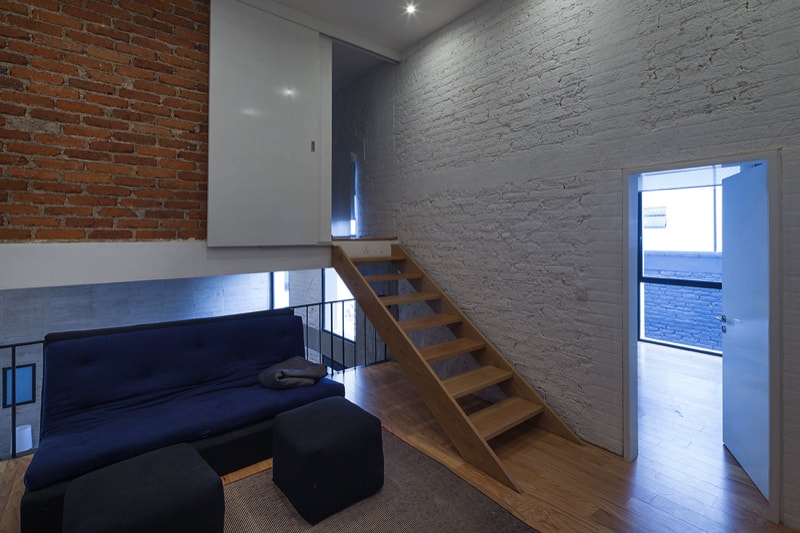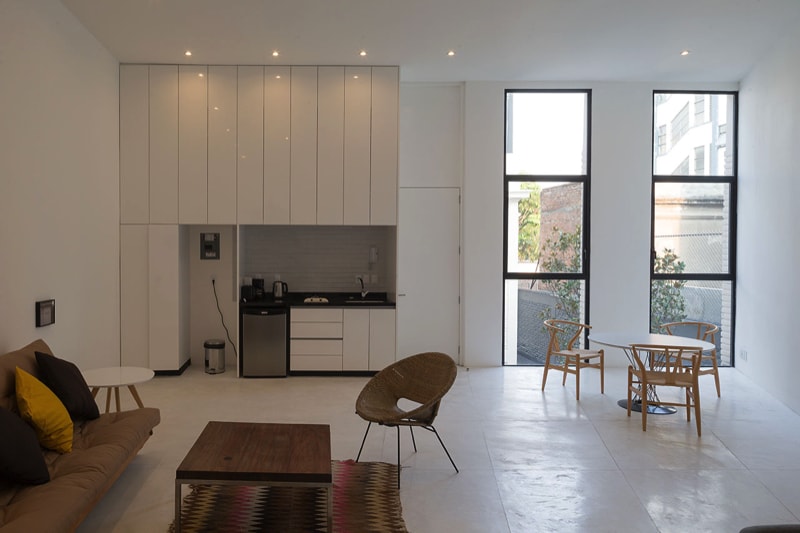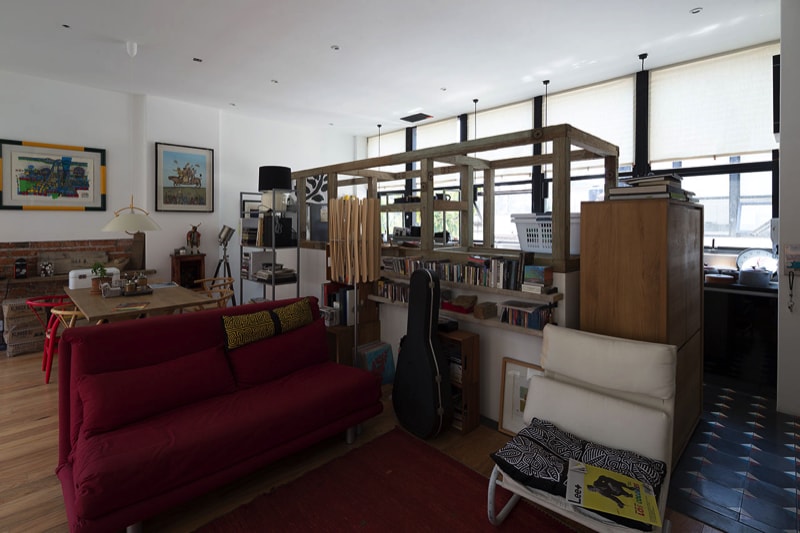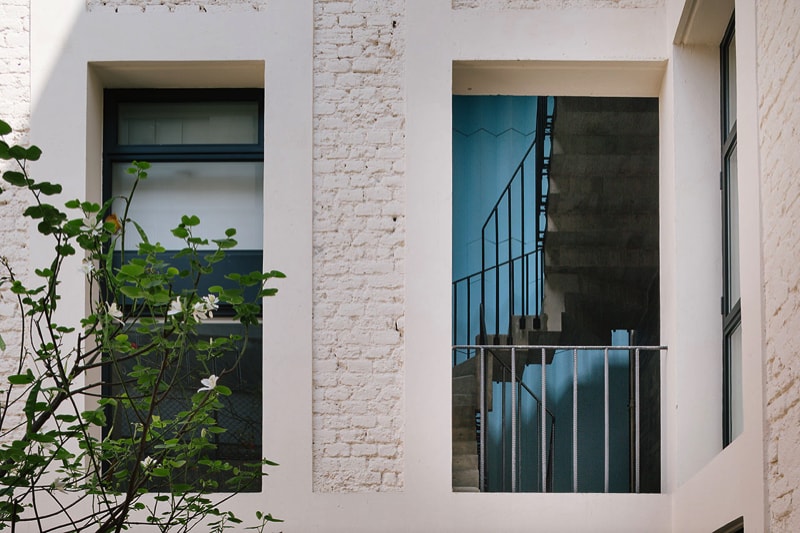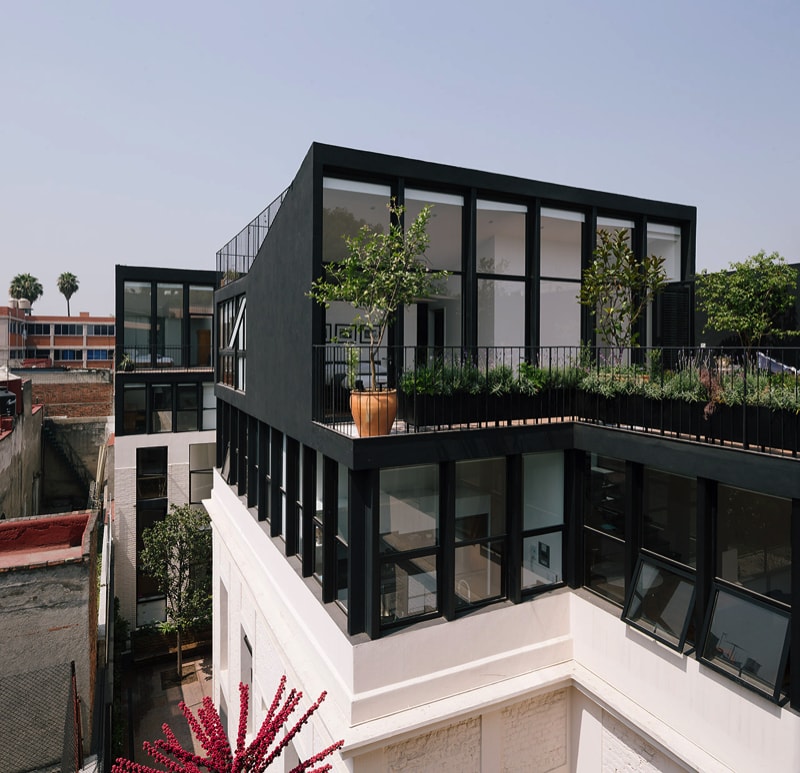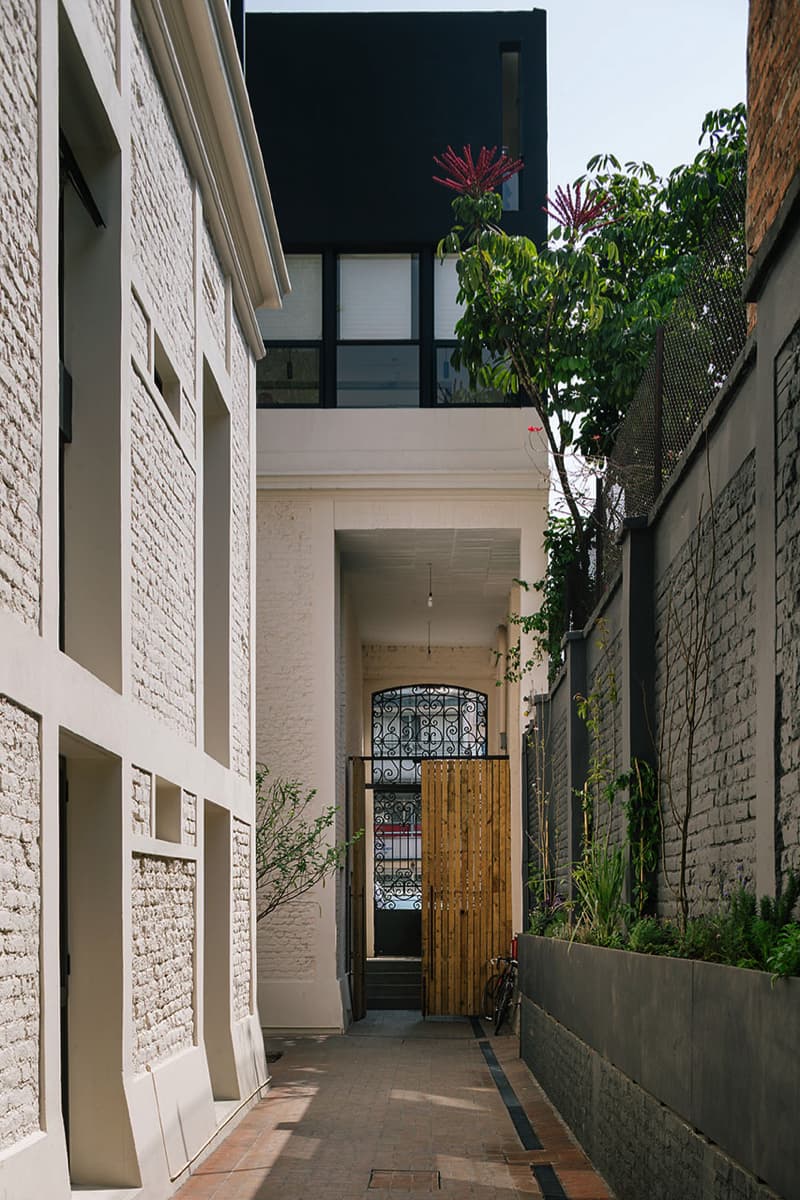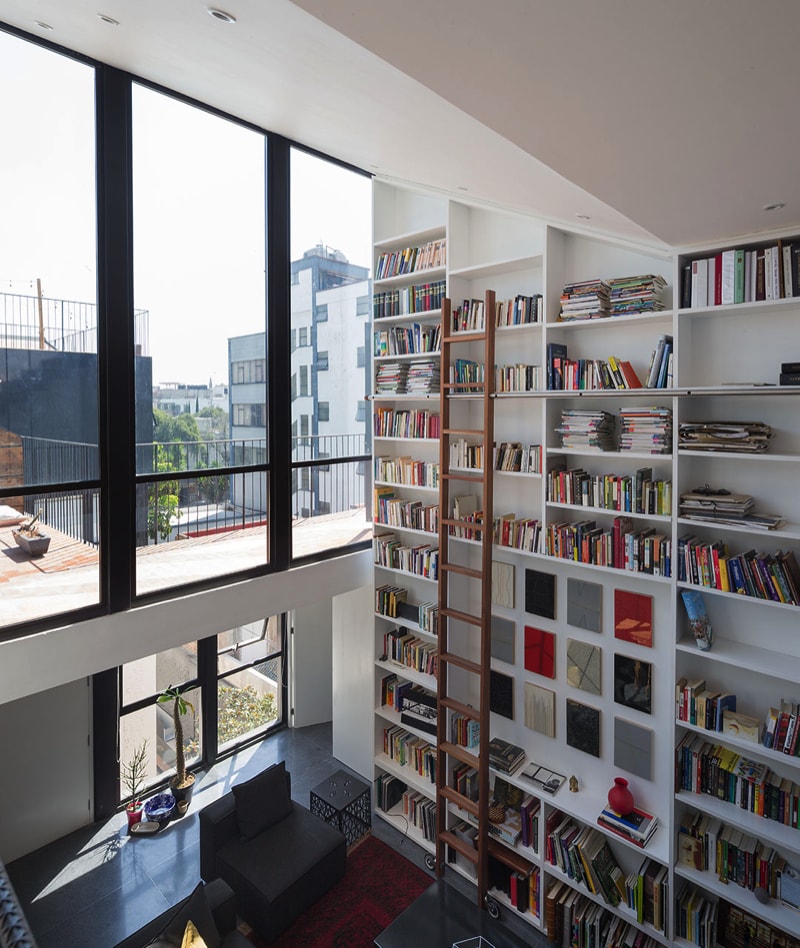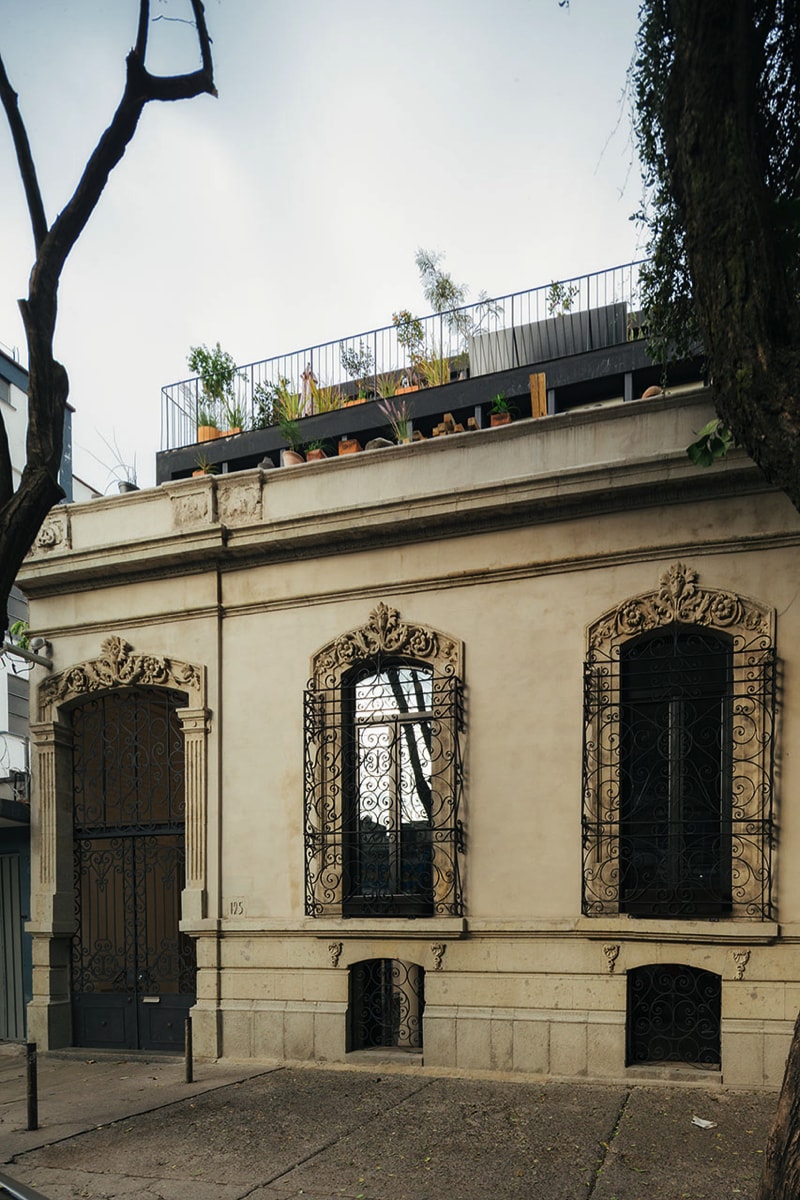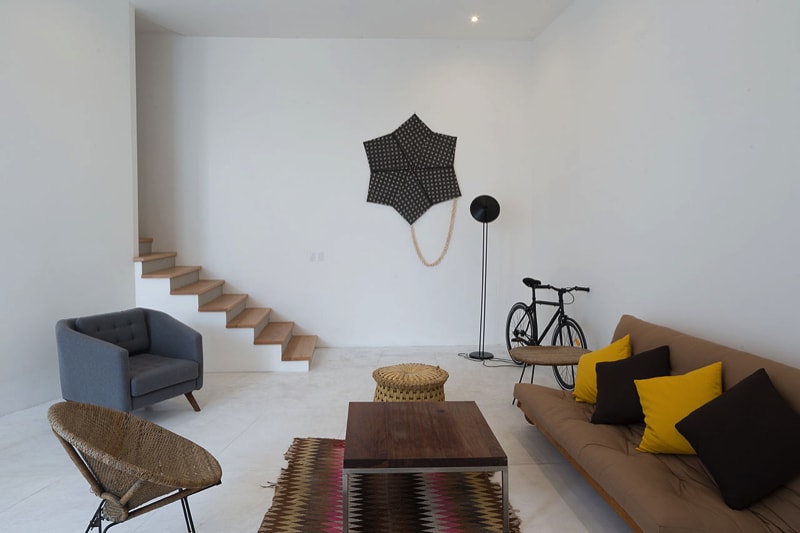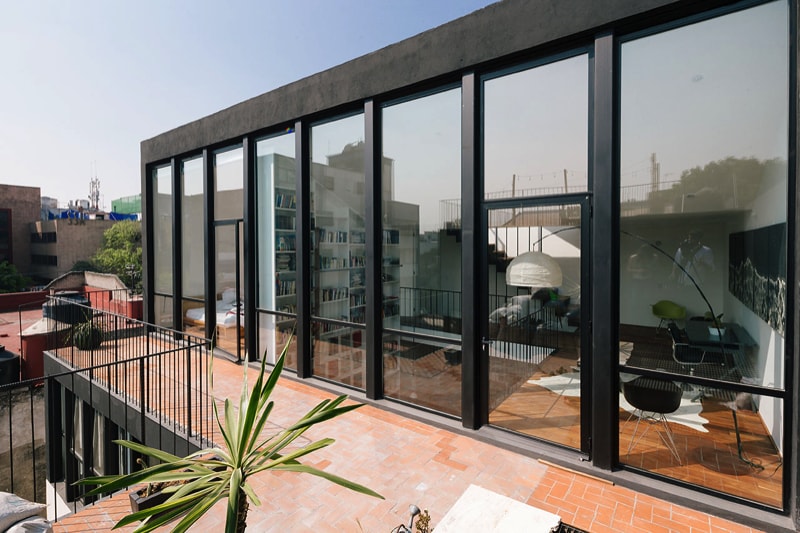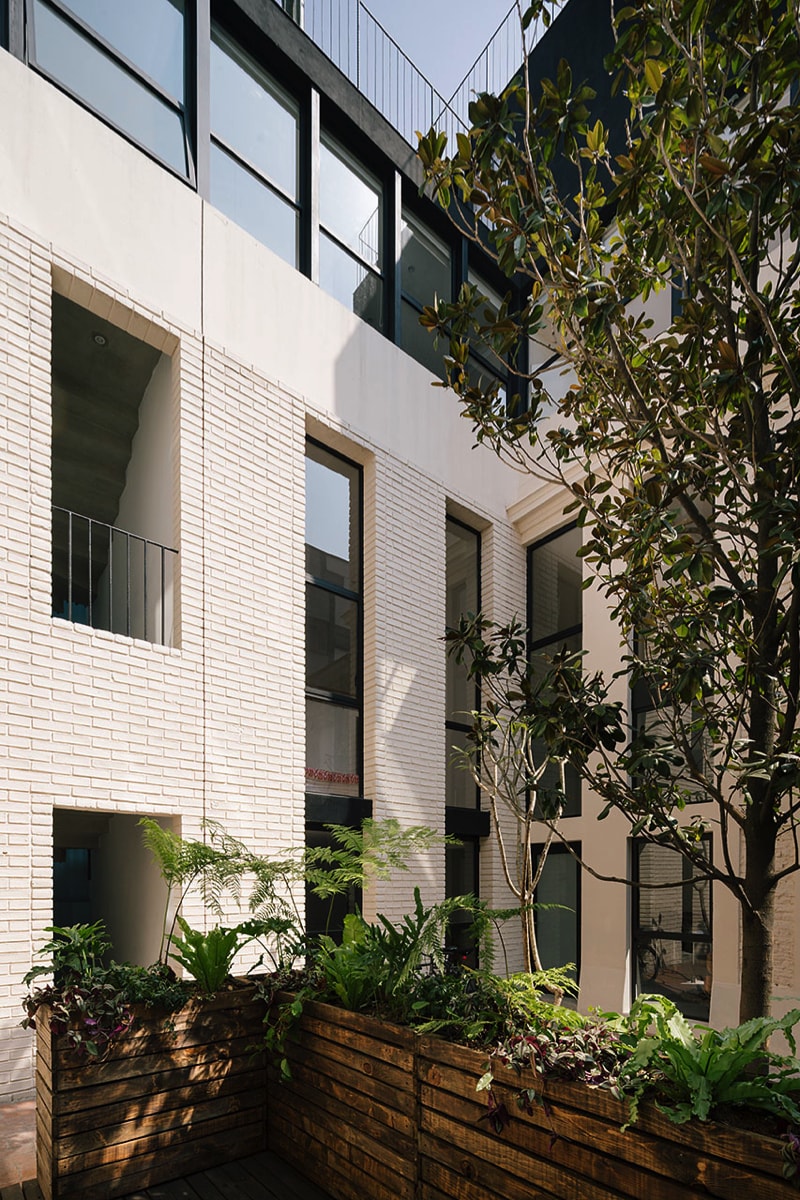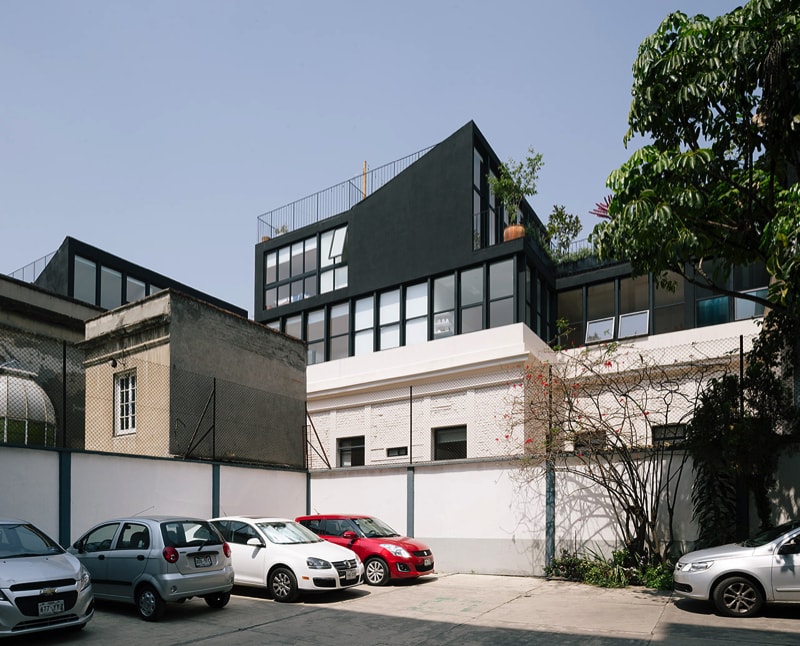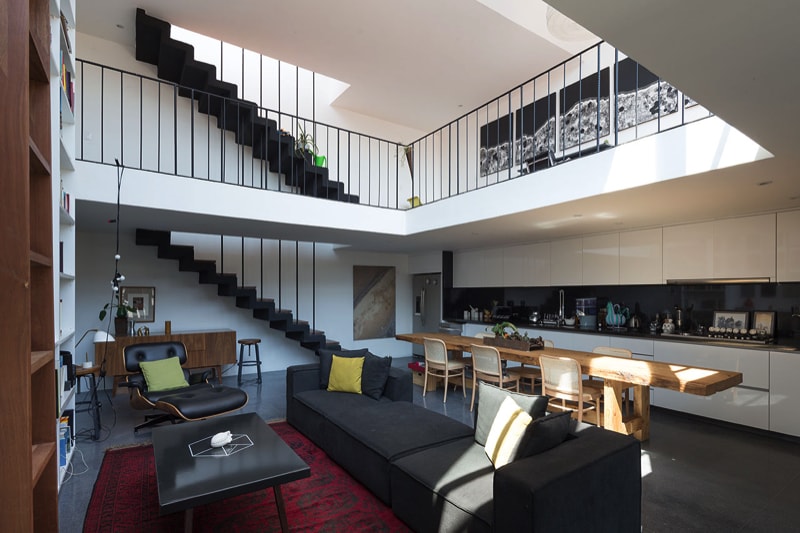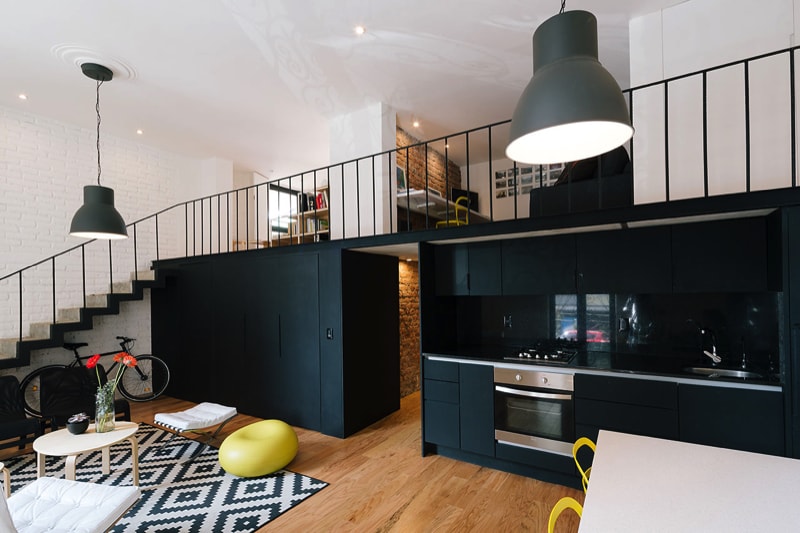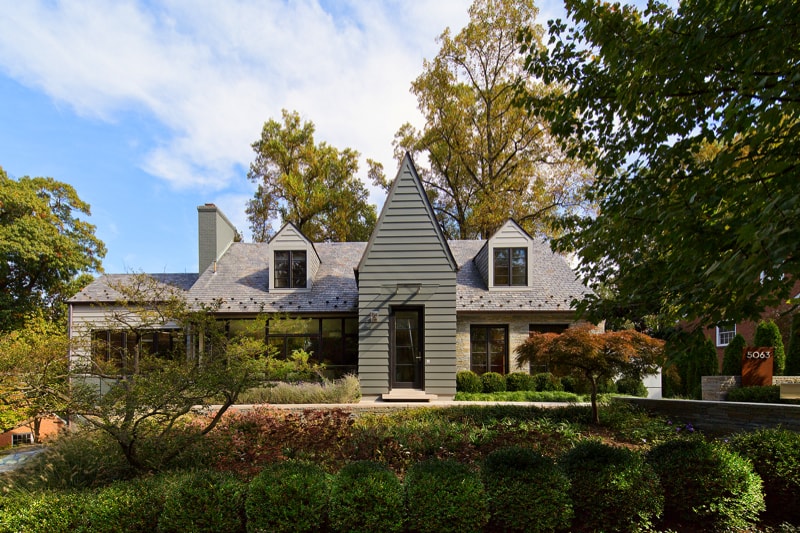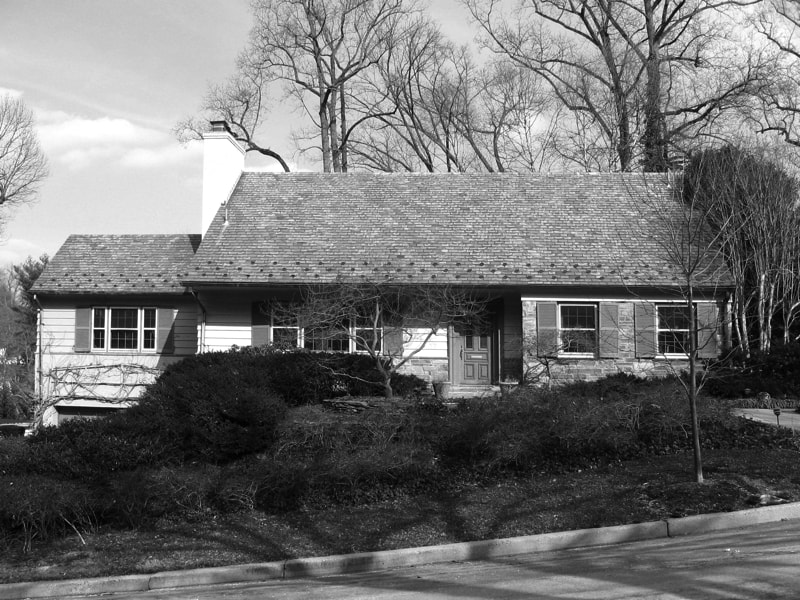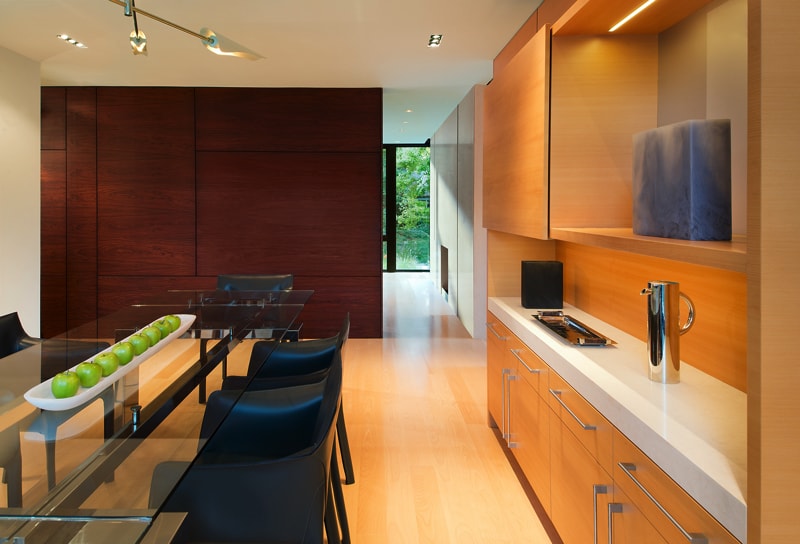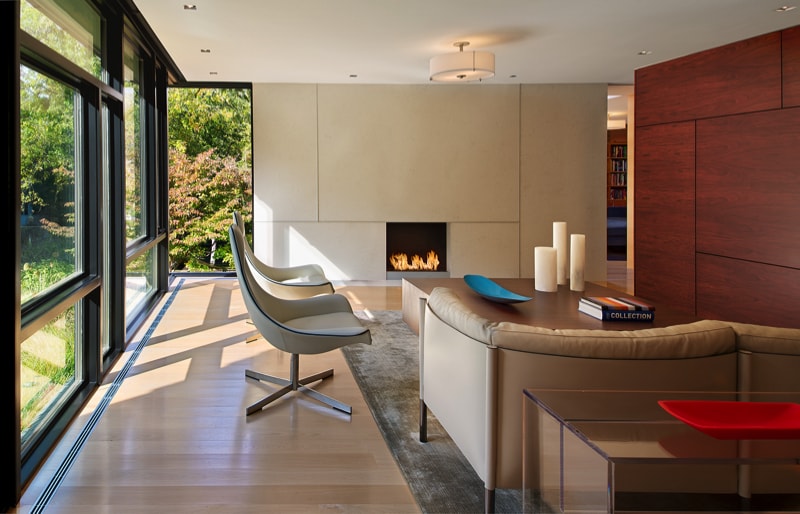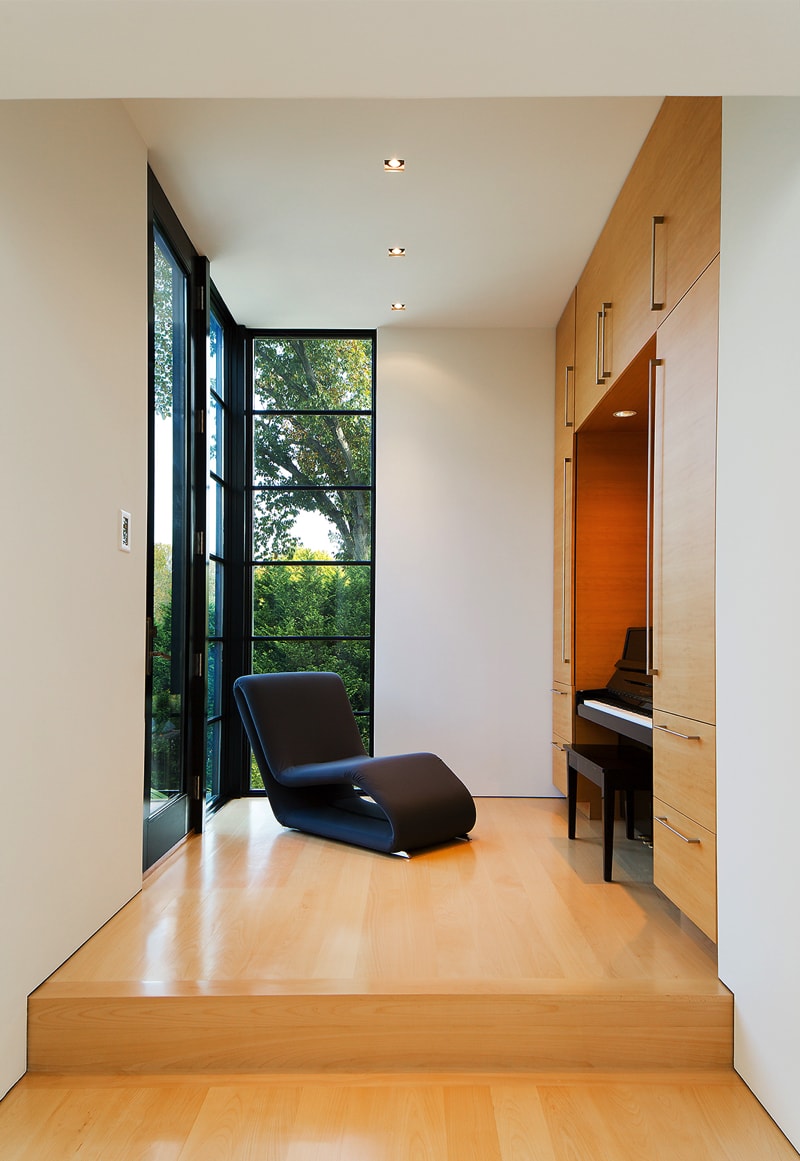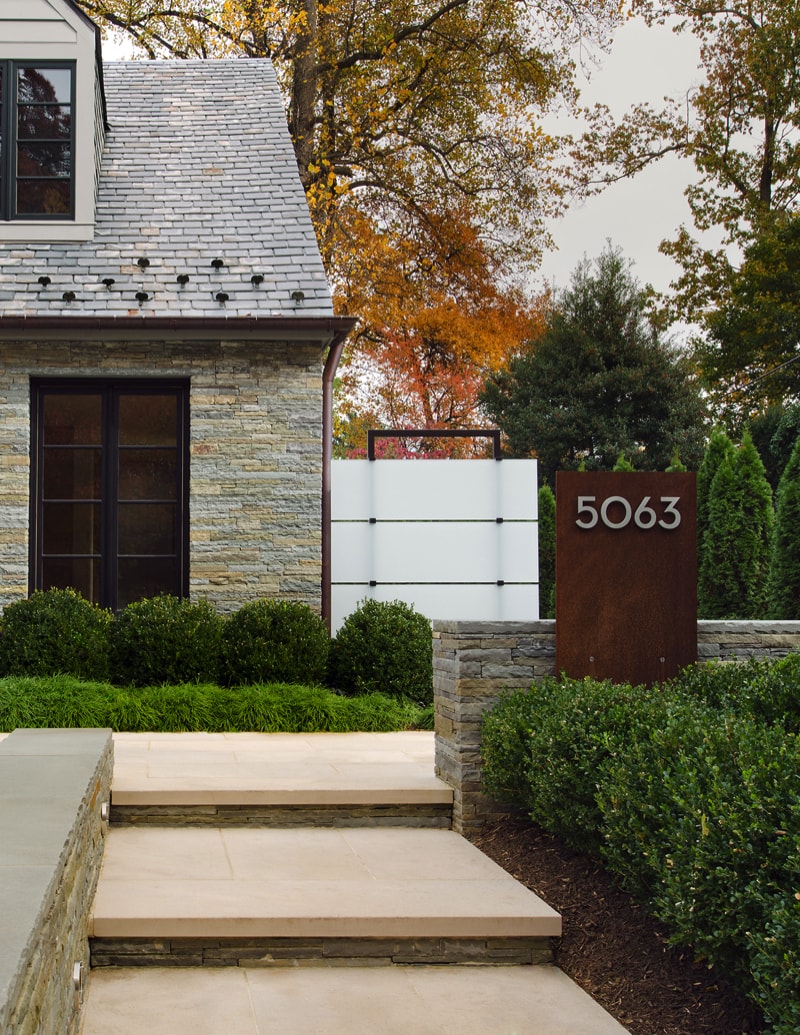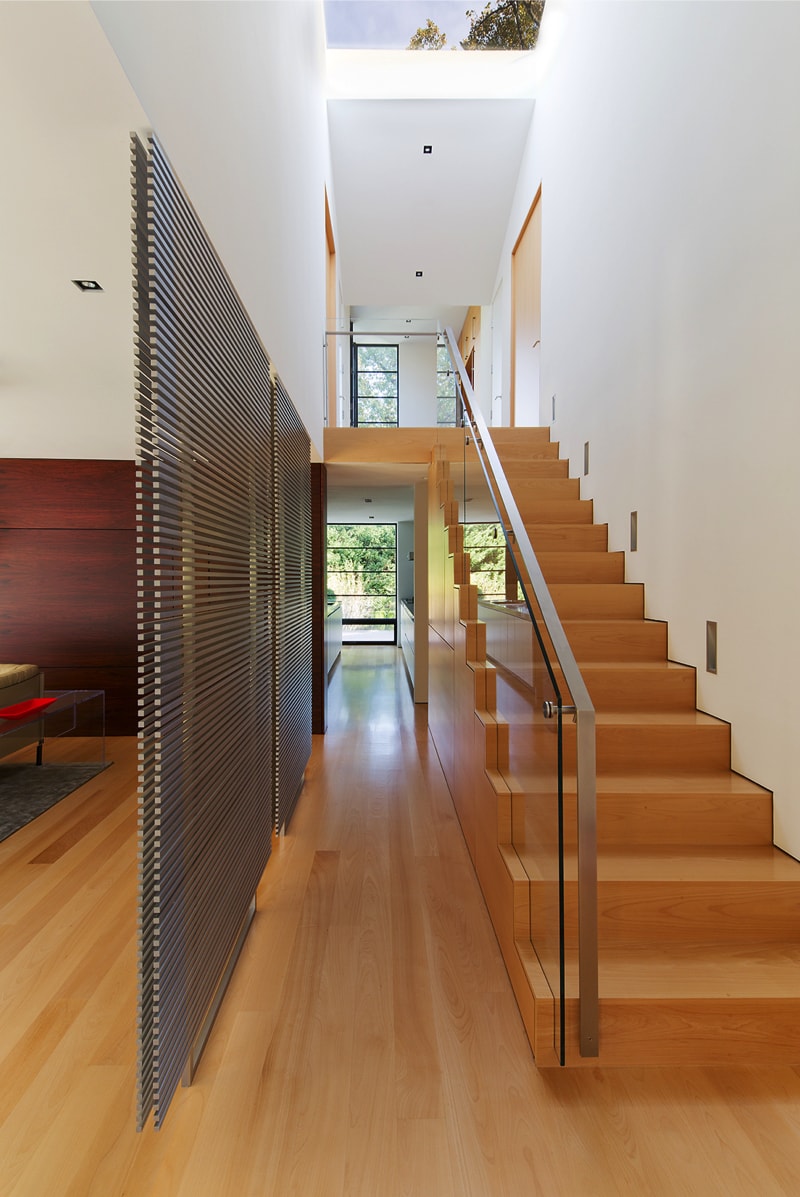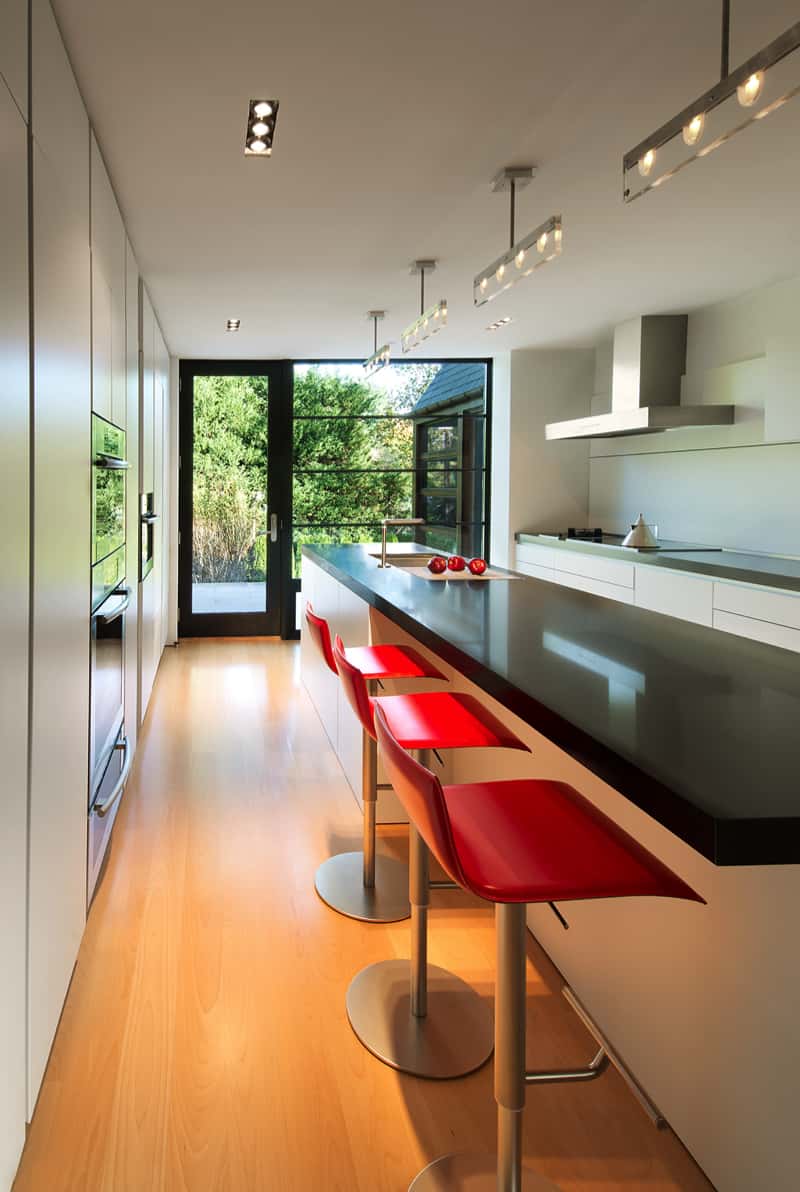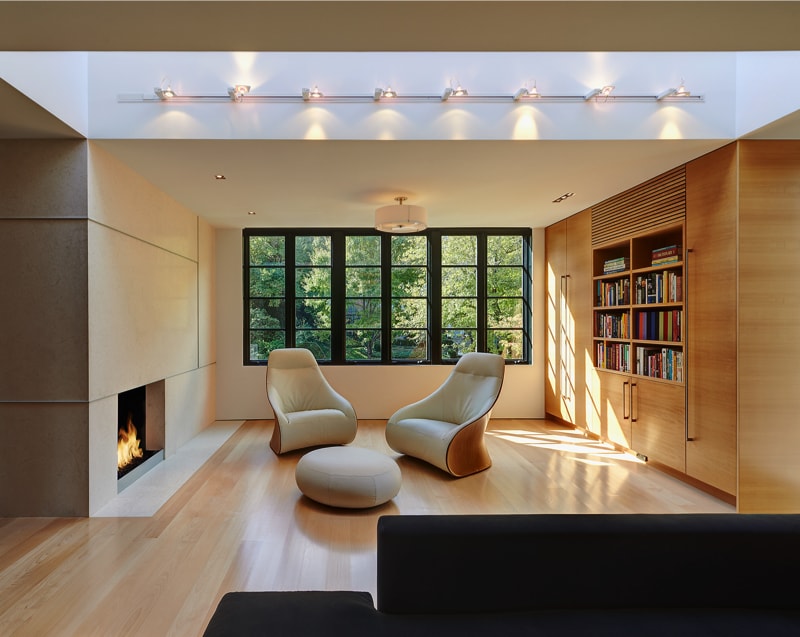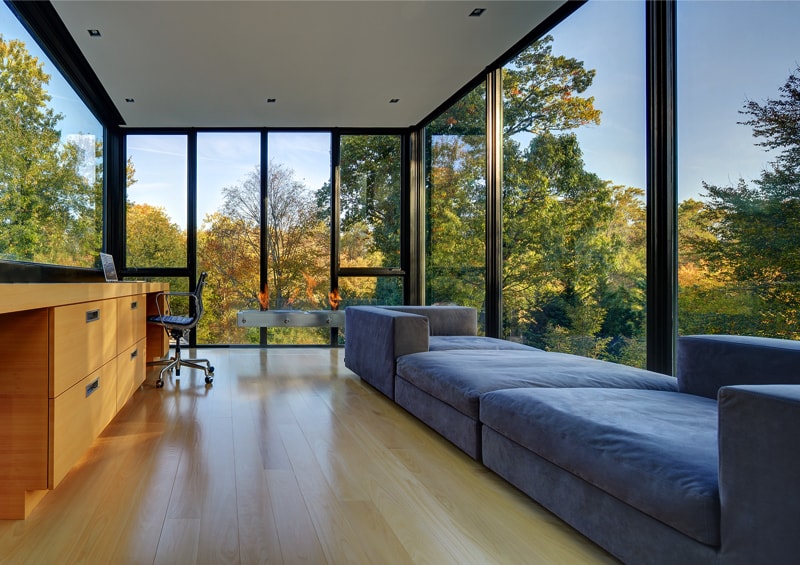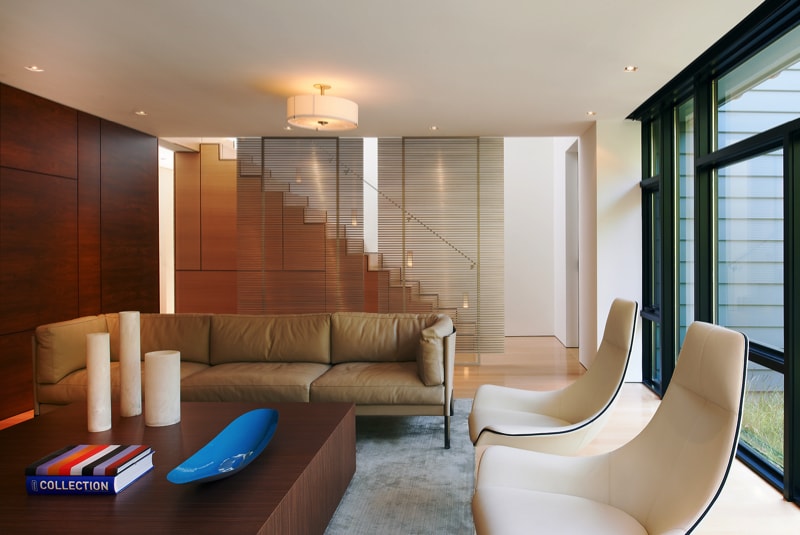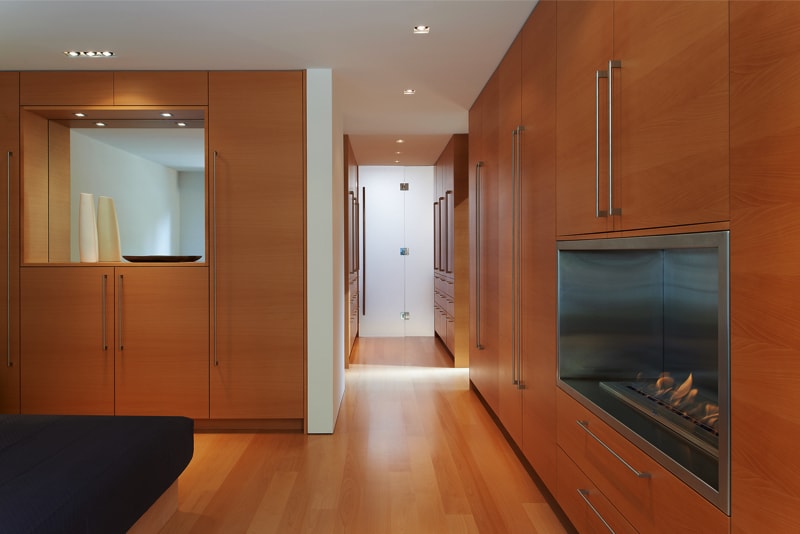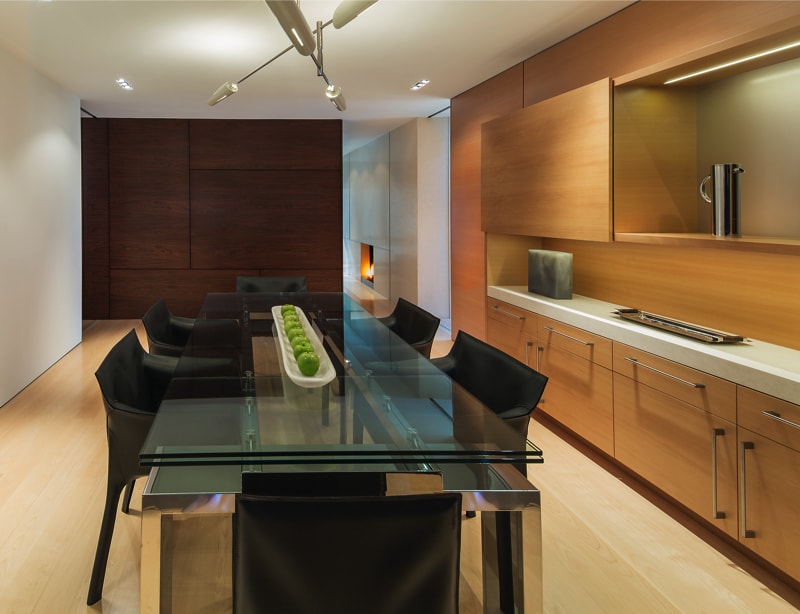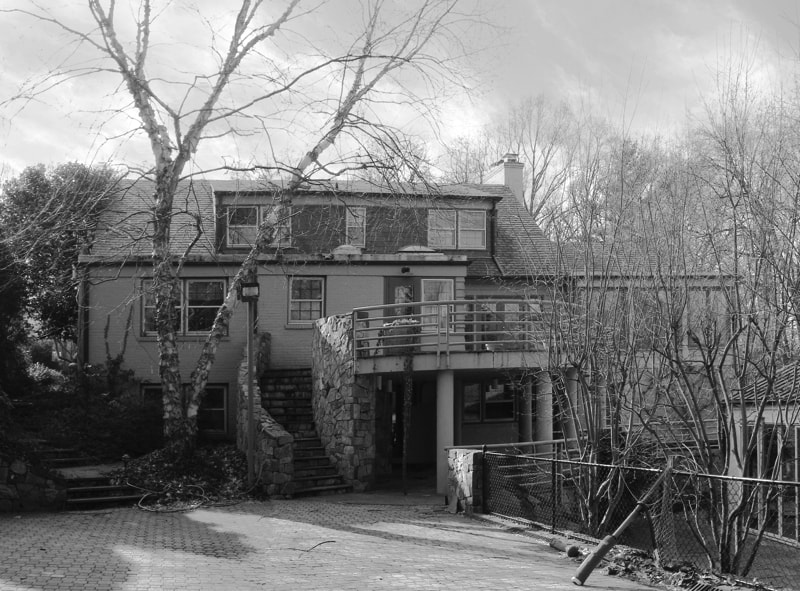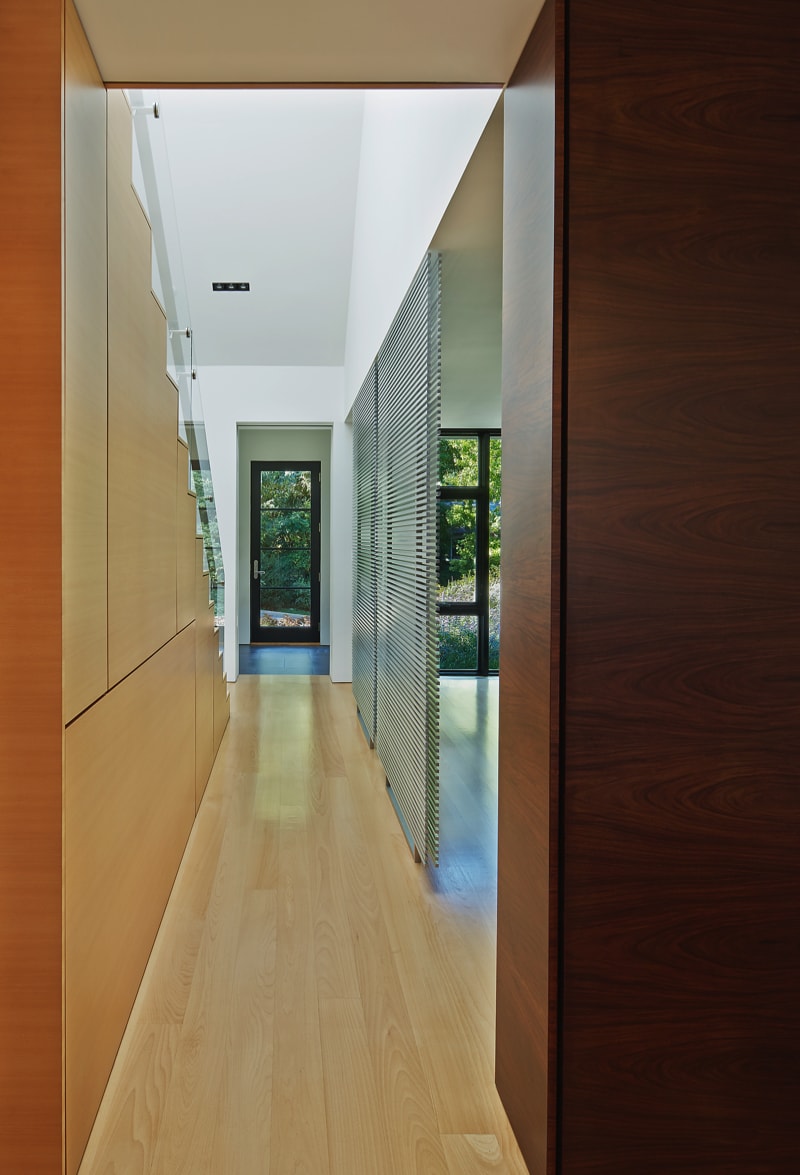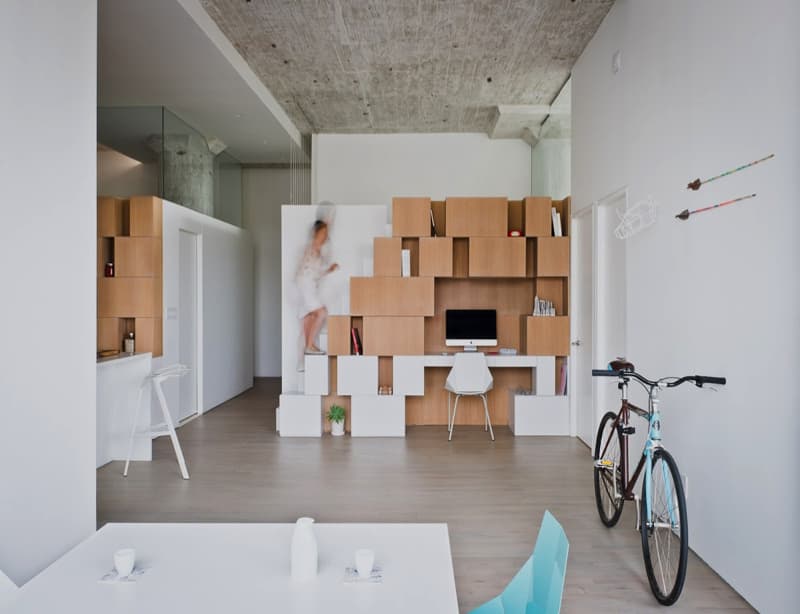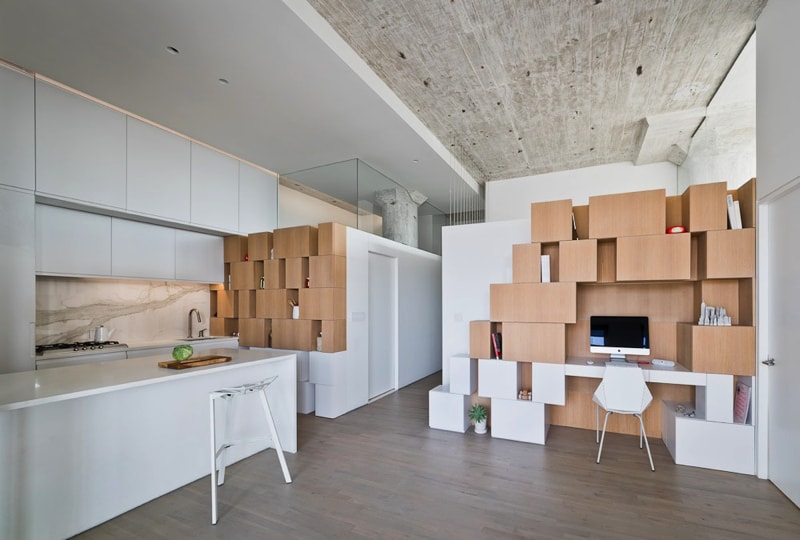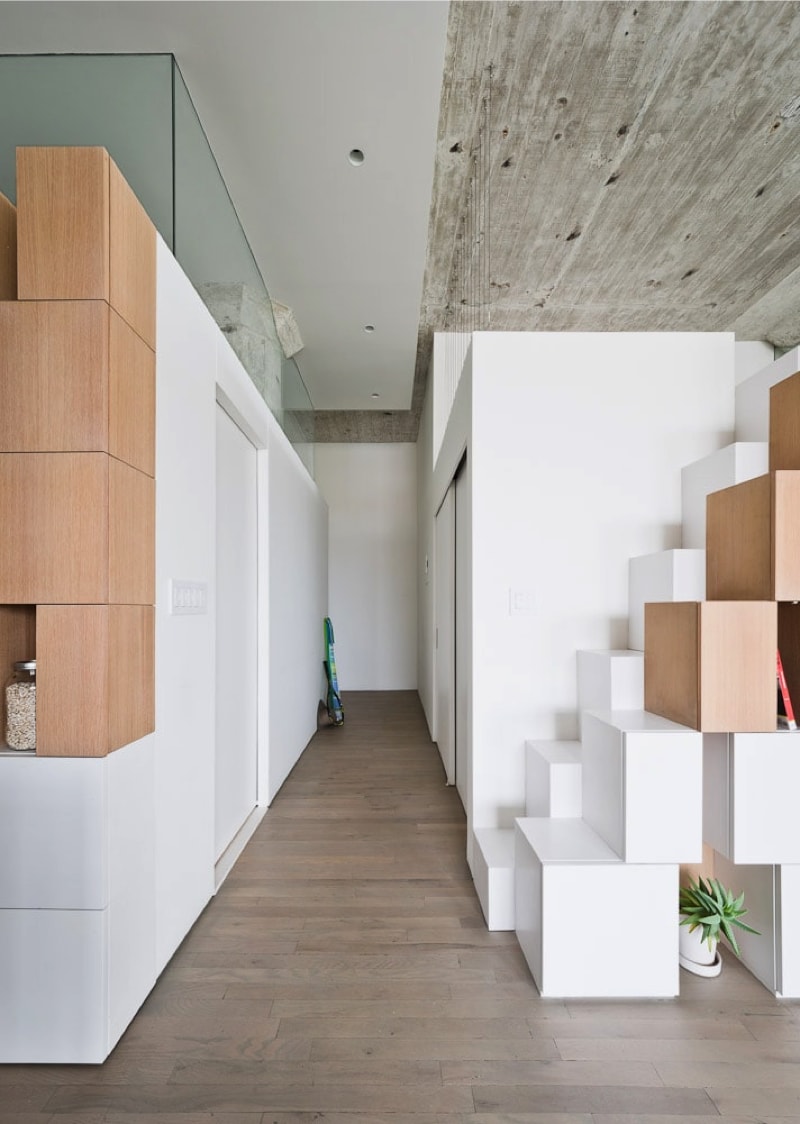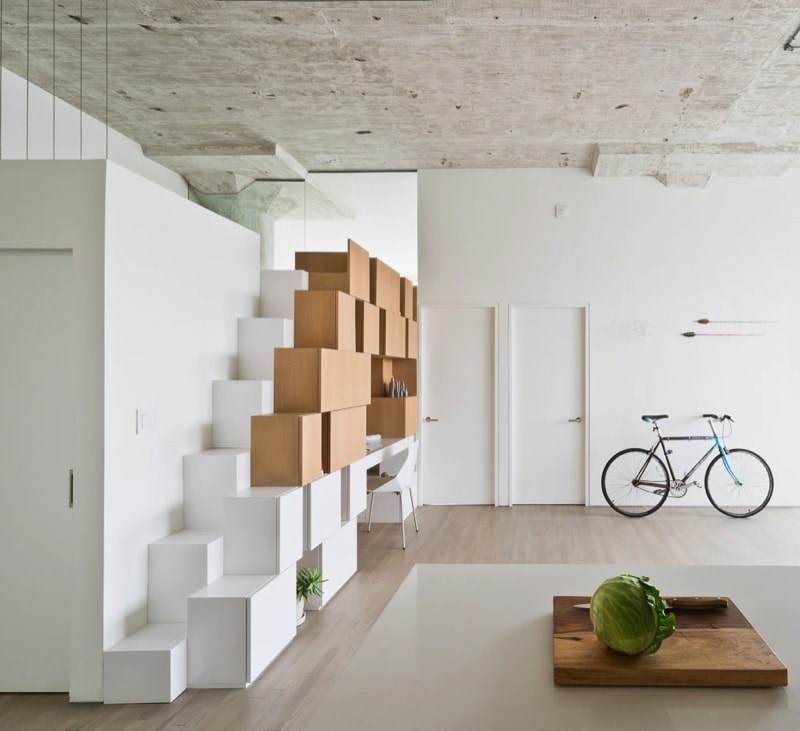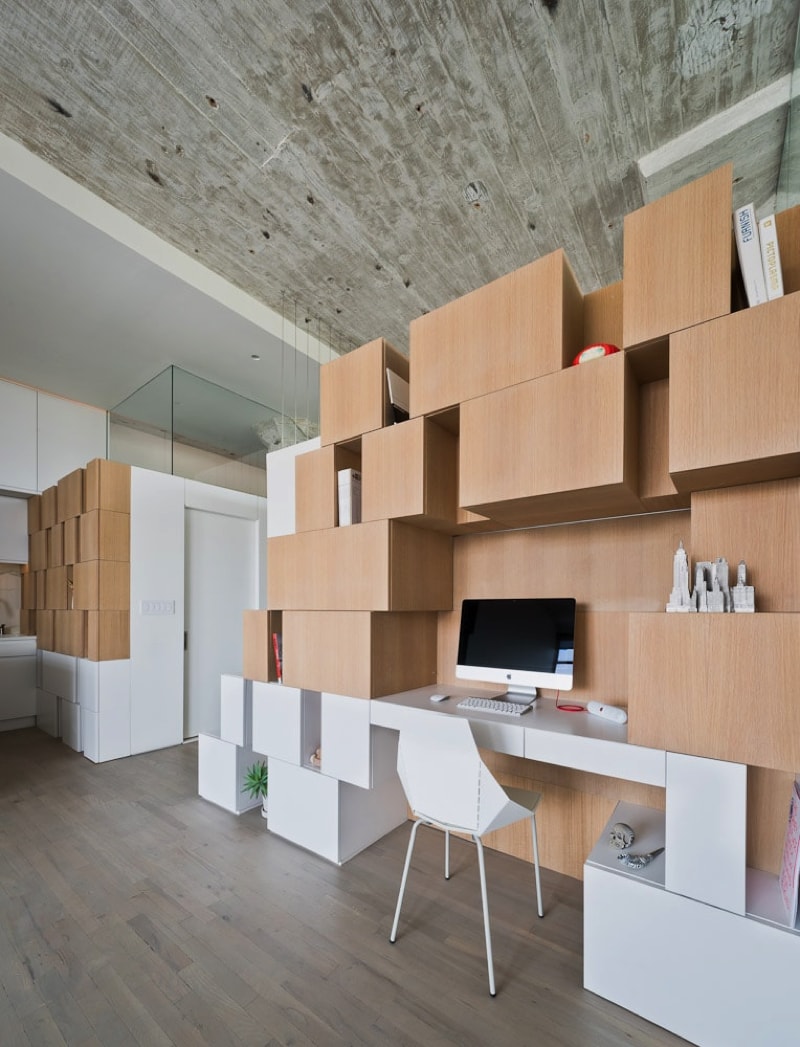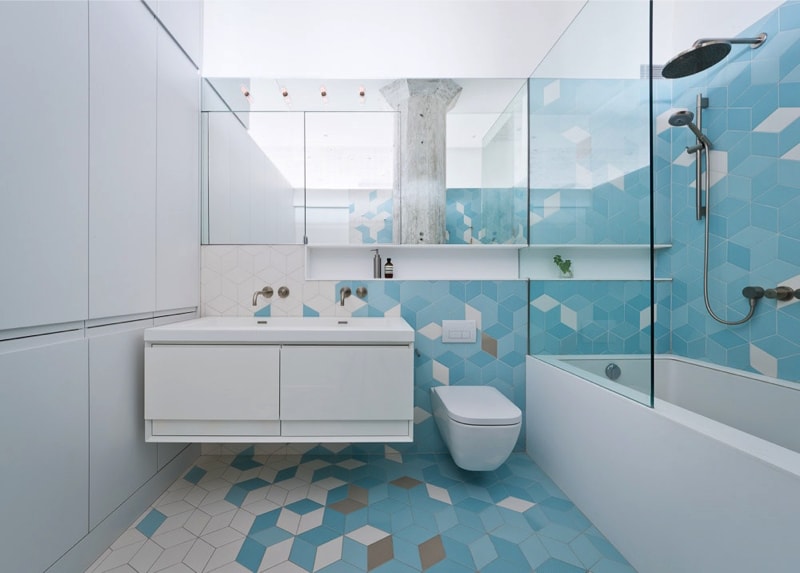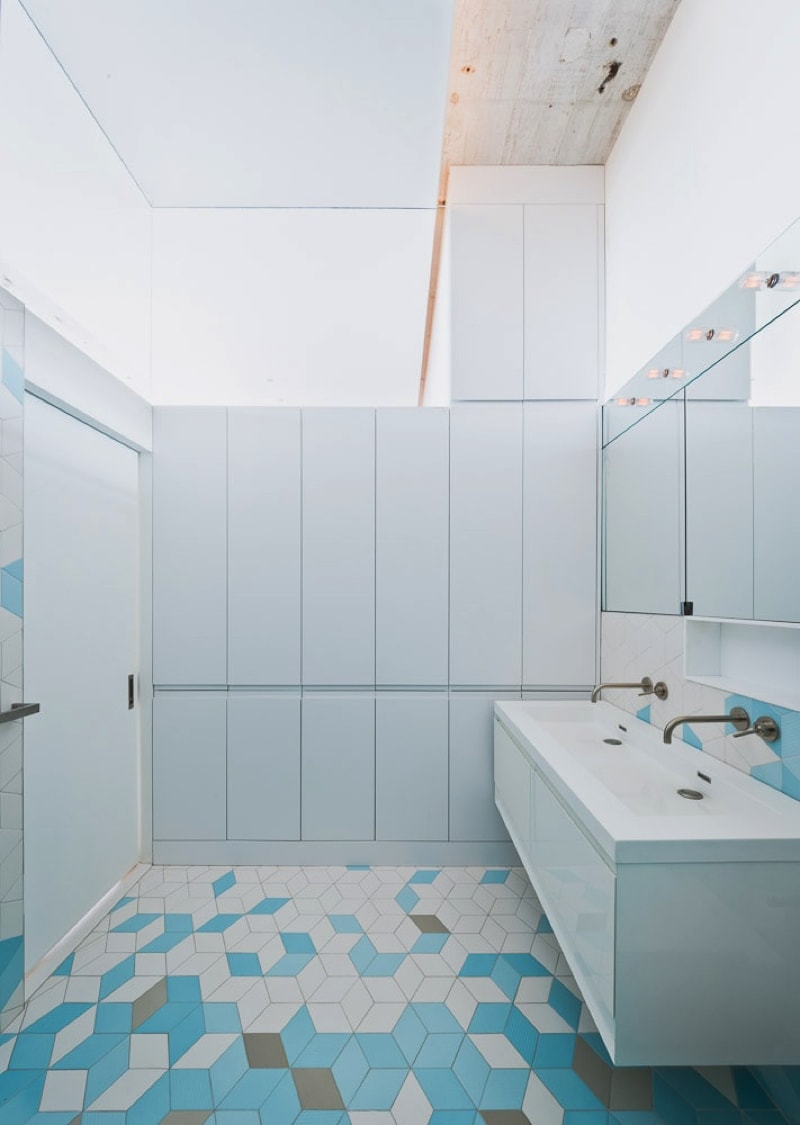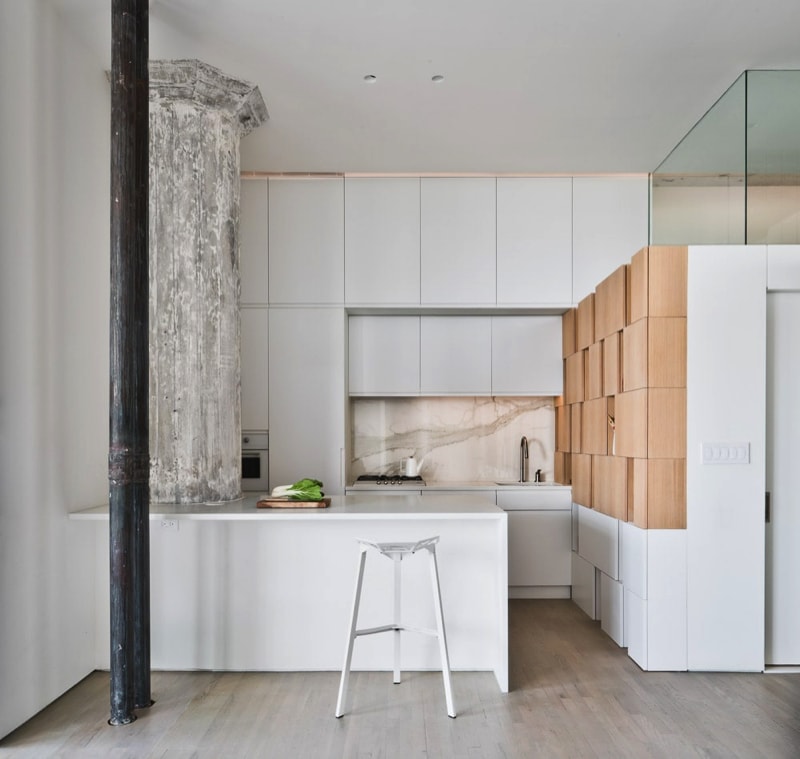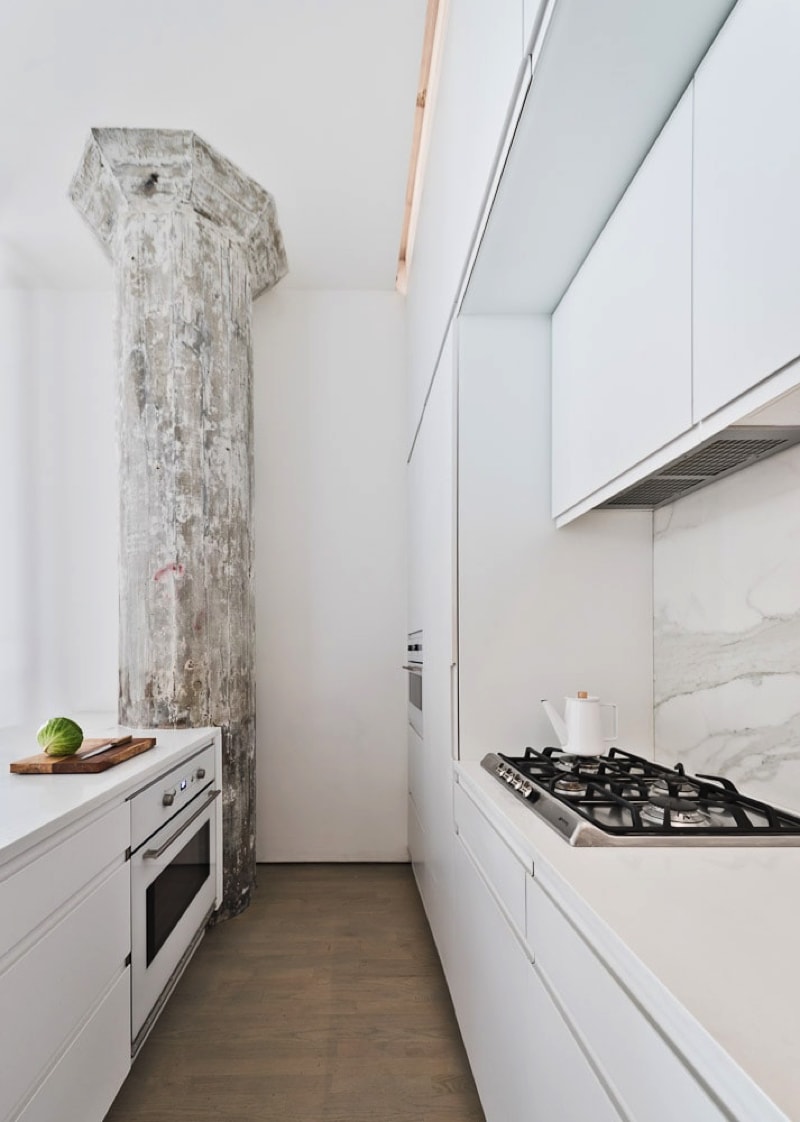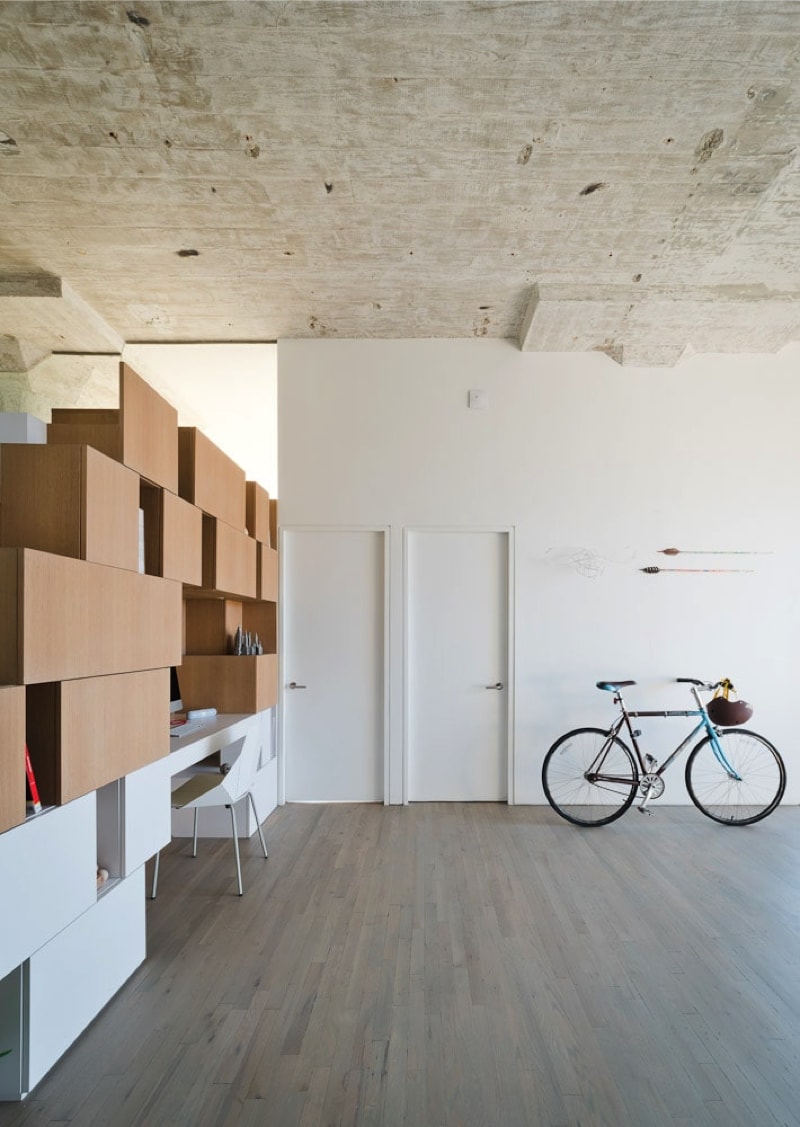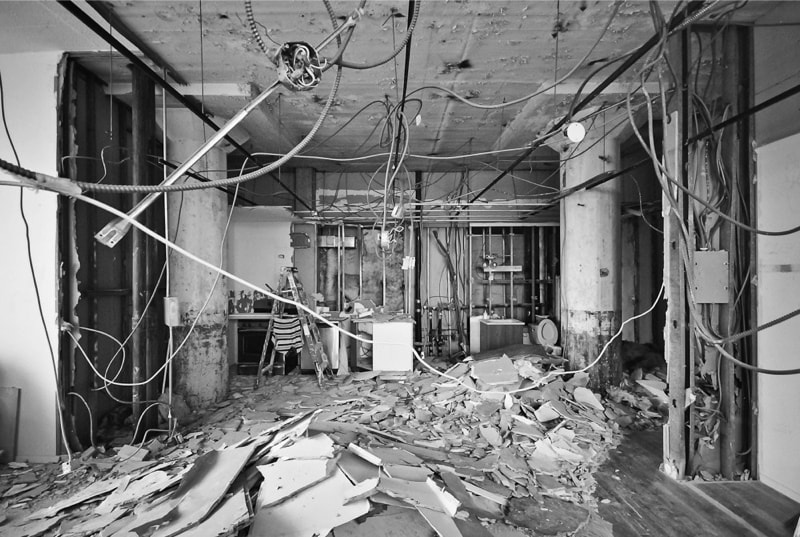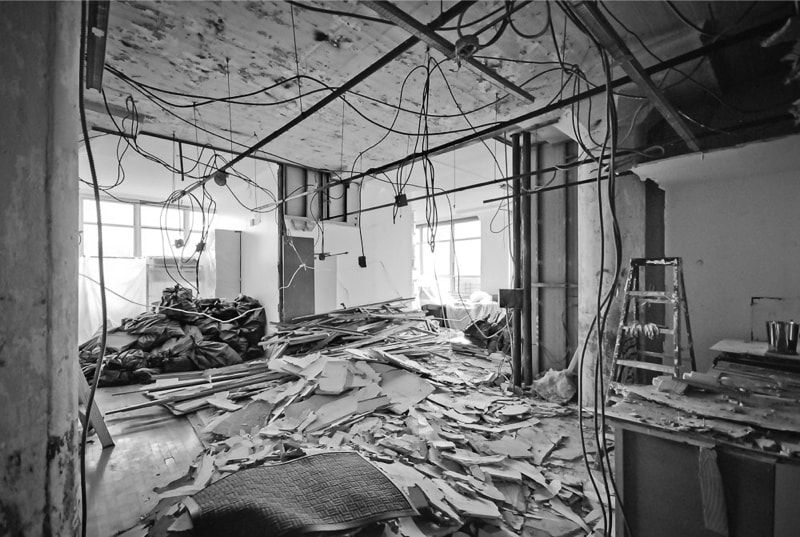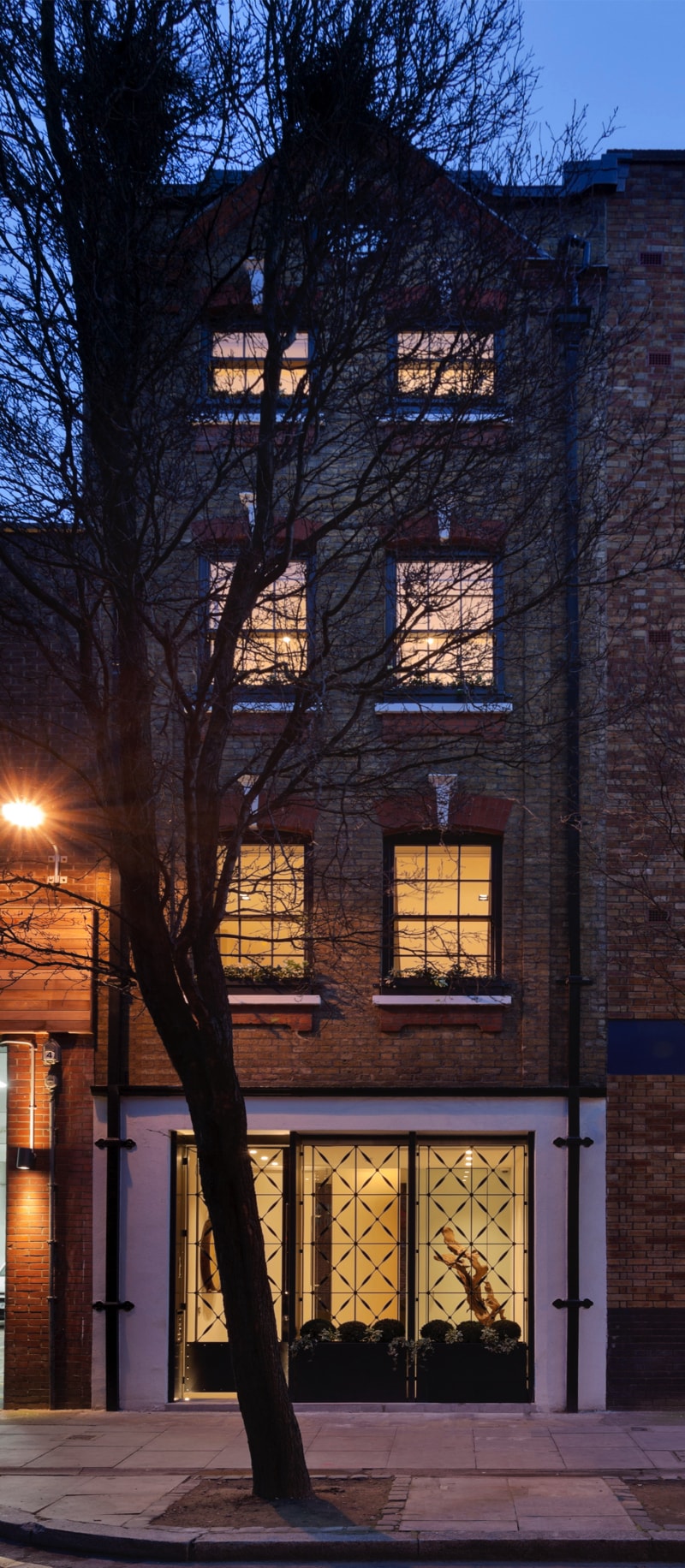
This Narrow House makeover project utilized the narrow deep plan of this tall terraced late 19th century building that was ill-suited to its previous use as offices, with escape distances pre-determining the necessity for the centrally located lift and stair core that sub-divided the floor plate into small inflexible work spaces.
This configuration was, we recognised, ideally suited to the creation of residential space though, with naturally-lit rooms of domestic scale located to the front and rear, and support spaces located inboard around the retained central stairs and lift. A use further suggested by the domestic style of the Dutch-gabled brick front elevation.
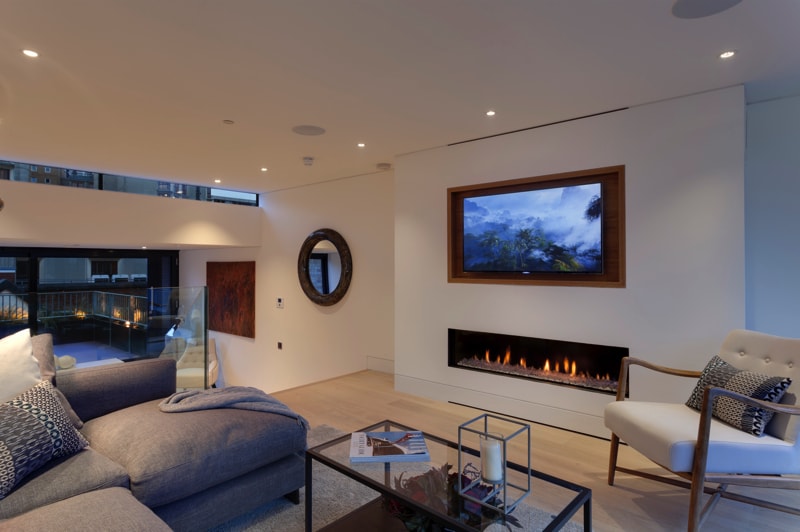 A change of use was therefore recommended to our developer client, with Planning Consent subsequently granted, contrary to local policy, for the creation of a luxurious 4-bedroom house.
A change of use was therefore recommended to our developer client, with Planning Consent subsequently granted, contrary to local policy, for the creation of a luxurious 4-bedroom house.
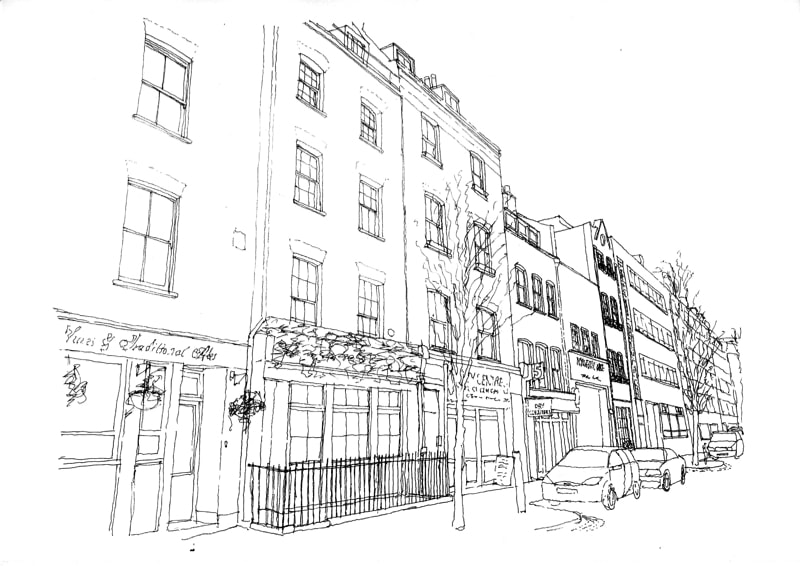 FORMstudio has developed something of a speciality in adding value to unpromising plots by radically rethinking the site’s potential through imaginative, adaptive transformation of redundant spaces.
FORMstudio has developed something of a speciality in adding value to unpromising plots by radically rethinking the site’s potential through imaginative, adaptive transformation of redundant spaces.
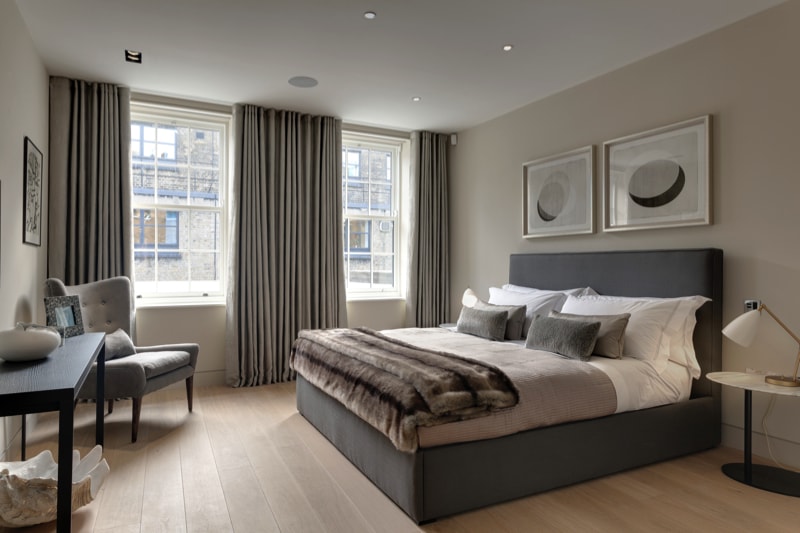 Subtle changes to the section of the building have created external spaces and allowed natural light to penetrate deep into the plan.
Subtle changes to the section of the building have created external spaces and allowed natural light to penetrate deep into the plan.
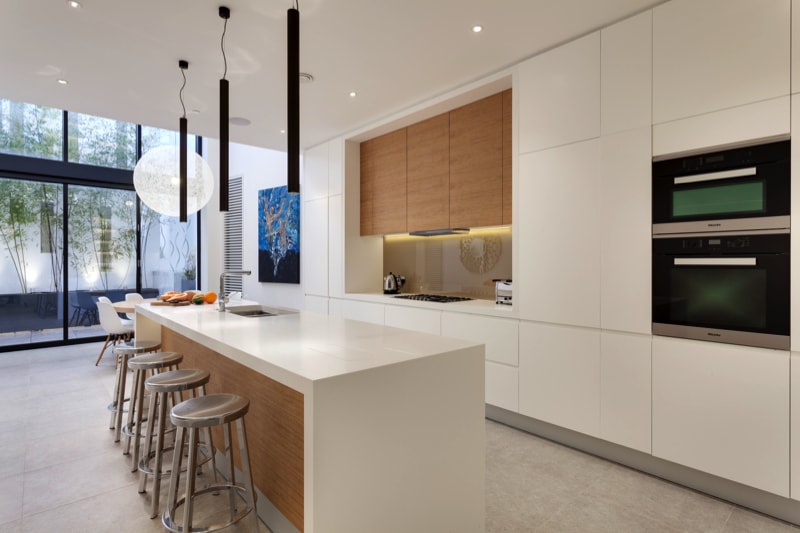 These include the creation of a soaring 6m double-height kitchen/dining space opening onto a small new ground floor courtyard; the replacement of the original hipped roof with an additional split-level studio floor with terraces front and rear; and the creation of an entry courtyard recessed behind a decorative metal screen that echoes the proportions and format of a shopfront on the pavement line.
These include the creation of a soaring 6m double-height kitchen/dining space opening onto a small new ground floor courtyard; the replacement of the original hipped roof with an additional split-level studio floor with terraces front and rear; and the creation of an entry courtyard recessed behind a decorative metal screen that echoes the proportions and format of a shopfront on the pavement line.
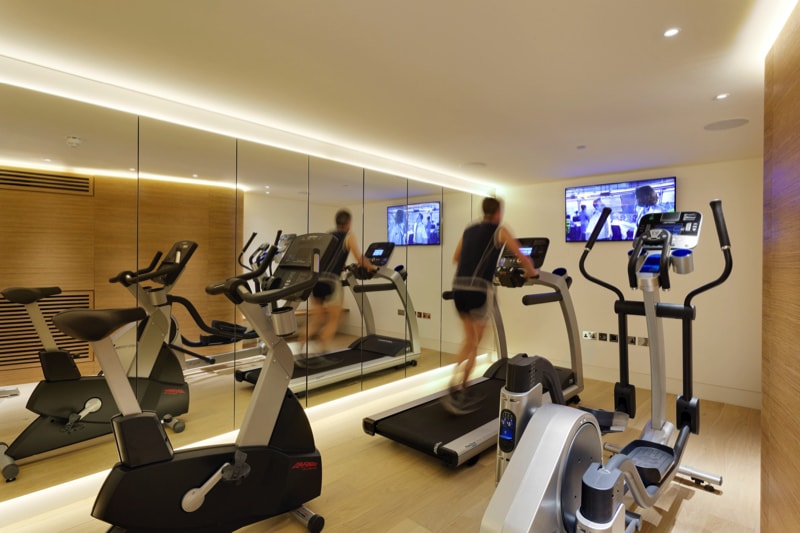 Redundant storage spaces in the artificially-lit lower ground floor have been given new life as a state-of-the-art cinema and gym; with sophisticated systems throughout the house providing control of lighting, AV, blinds, heating/air con and blinds via hand-held tablets.
Redundant storage spaces in the artificially-lit lower ground floor have been given new life as a state-of-the-art cinema and gym; with sophisticated systems throughout the house providing control of lighting, AV, blinds, heating/air con and blinds via hand-held tablets.
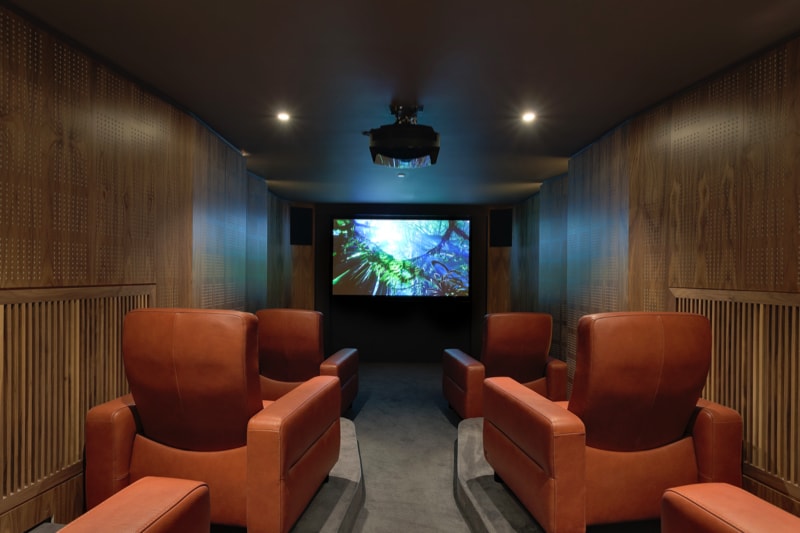 New and existing fabric has high levels of insulation and air-tightness whilst MVHR systems, air-source heat pumps and low-energy LED lighting help limit environmental impact.
New and existing fabric has high levels of insulation and air-tightness whilst MVHR systems, air-source heat pumps and low-energy LED lighting help limit environmental impact.
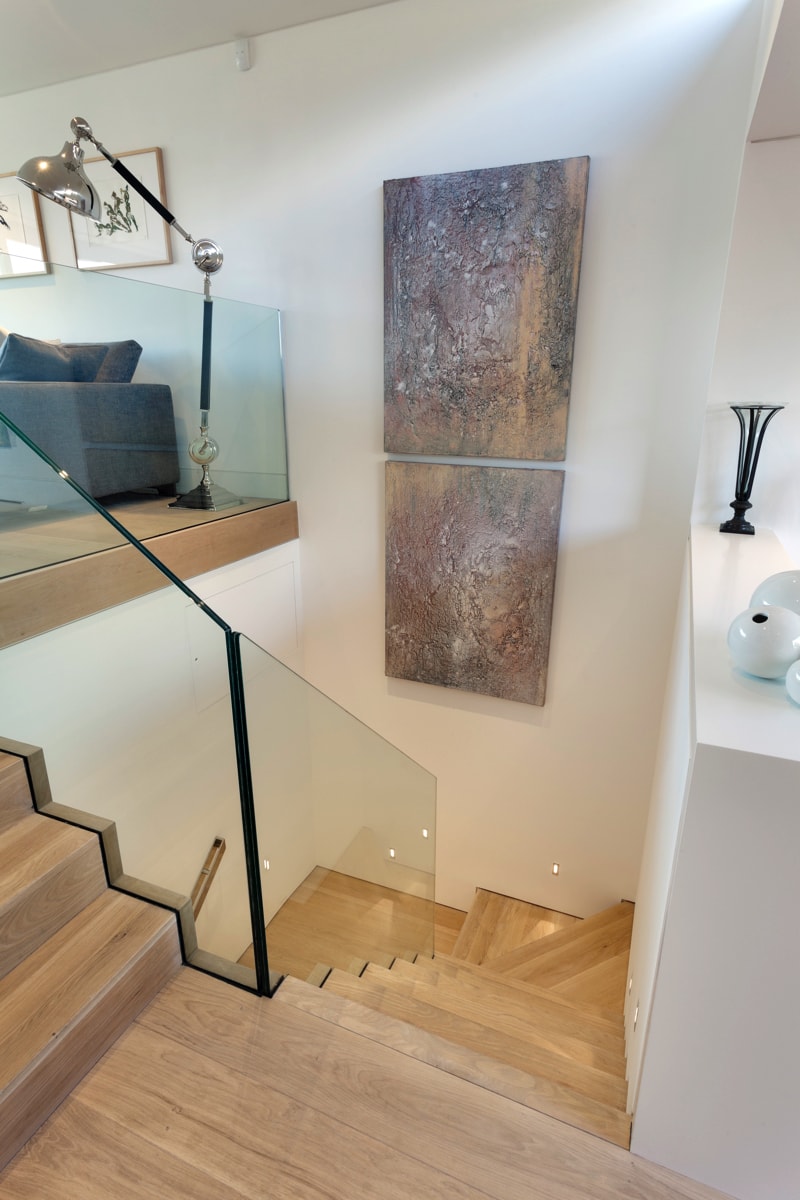 The retention of the existing passenger lift and adherence to Lifetime Homes standards mean that the house can be a proper family home for all potential occupants.
The retention of the existing passenger lift and adherence to Lifetime Homes standards mean that the house can be a proper family home for all potential occupants.
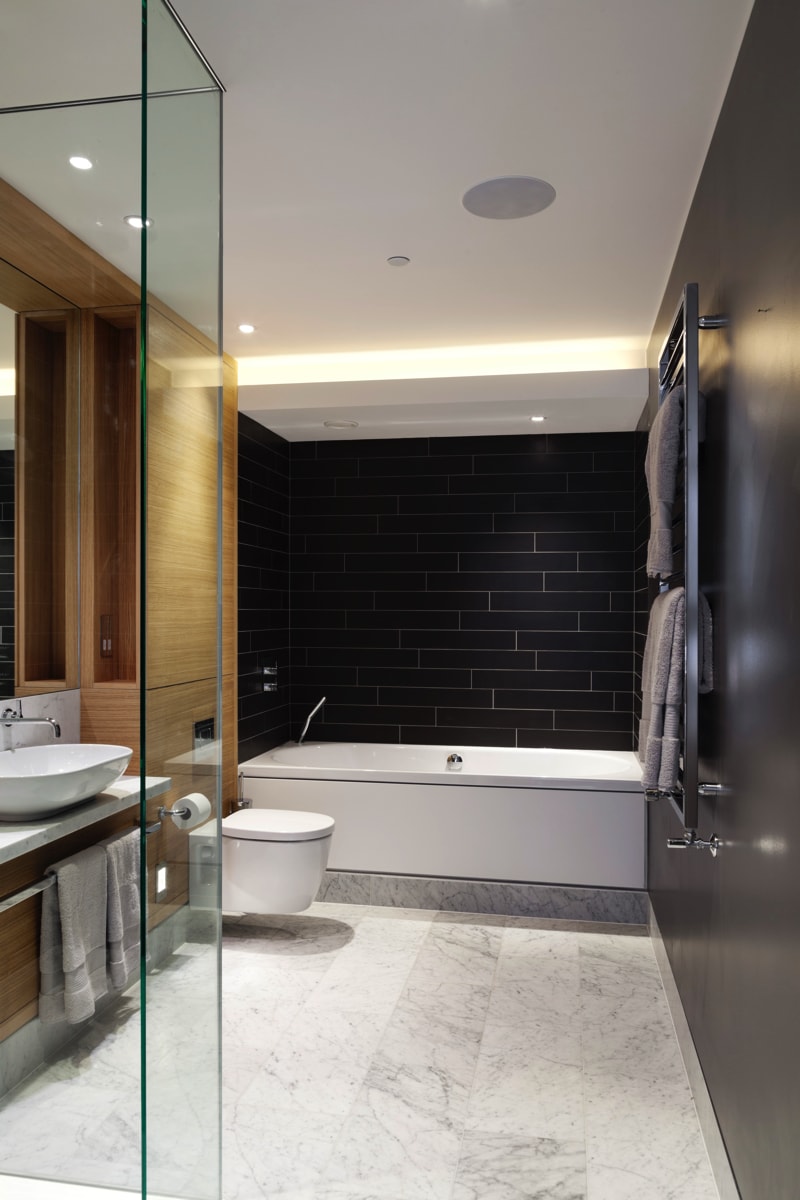 Fastidious detailing and a limited palette of high quality materials, together with a fire- engineered approach to layout (removing the necessity for lobbies), have helped to create a calm restful interior with a good spatial flow between the 6 floors of accommodation.
Fastidious detailing and a limited palette of high quality materials, together with a fire- engineered approach to layout (removing the necessity for lobbies), have helped to create a calm restful interior with a good spatial flow between the 6 floors of accommodation.
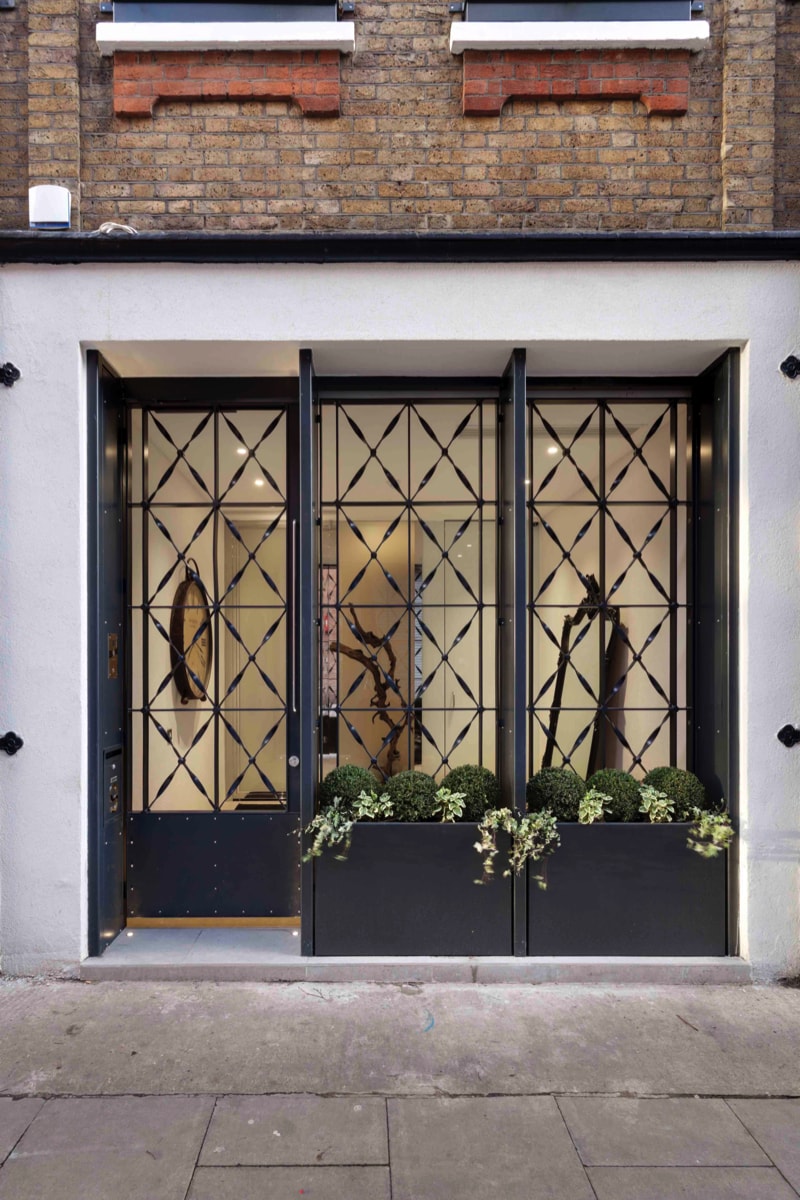 The house is now a tranquil oasis of calm despite being located in the bustling centre of Covent Garden. Planters at the ground floor and window boxes to the sash windows have been added on the street elevation to provide vegetation as a foil to the hard materials of this dense urban environment.
The house is now a tranquil oasis of calm despite being located in the bustling centre of Covent Garden. Planters at the ground floor and window boxes to the sash windows have been added on the street elevation to provide vegetation as a foil to the hard materials of this dense urban environment.
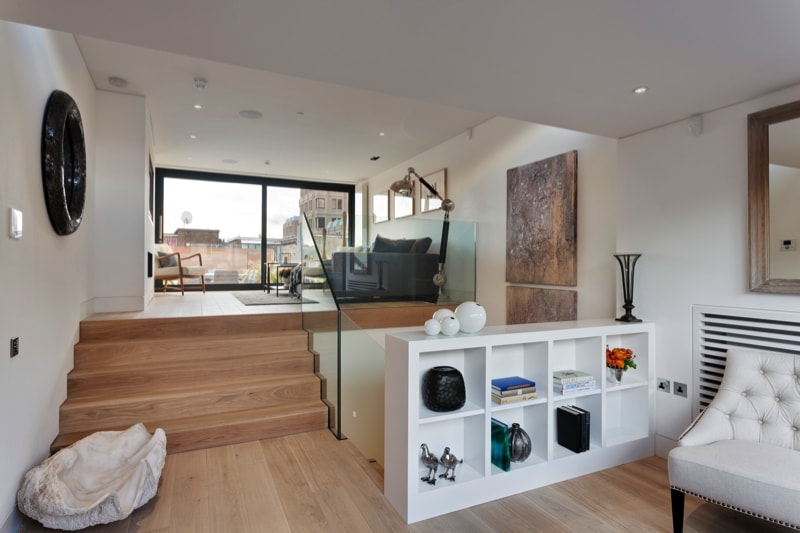 As part of the landscaping scheme to the rear courtyard, tall bamboo canes accentuate the height, providing a living green wall that can be enjoyed from the interior spaces through the glass, whilst a water feature in the corner provides calming sound and gentle movement.
As part of the landscaping scheme to the rear courtyard, tall bamboo canes accentuate the height, providing a living green wall that can be enjoyed from the interior spaces through the glass, whilst a water feature in the corner provides calming sound and gentle movement.
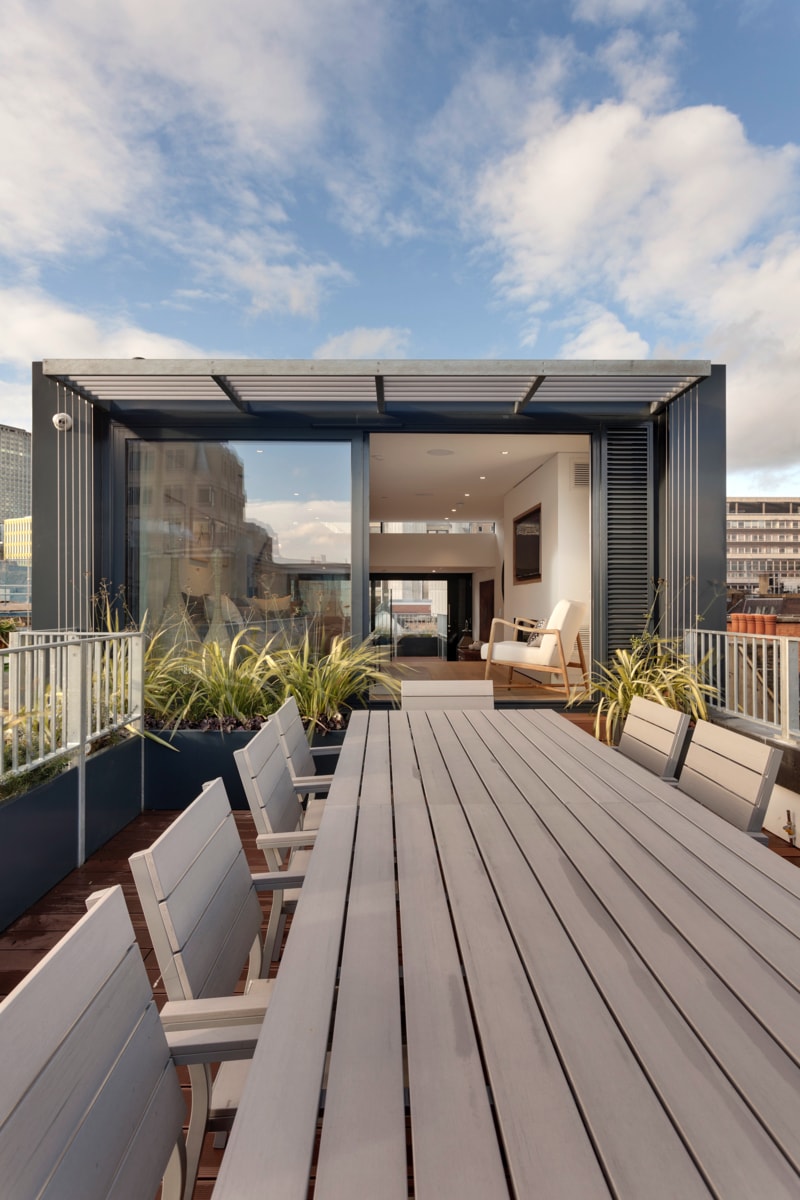 The planting to the roof terraces provides year round colour and screening, offering rare outdoor relaxation and entertaining space high above the rooftops with views over the West End of London.
The planting to the roof terraces provides year round colour and screening, offering rare outdoor relaxation and entertaining space high above the rooftops with views over the West End of London.
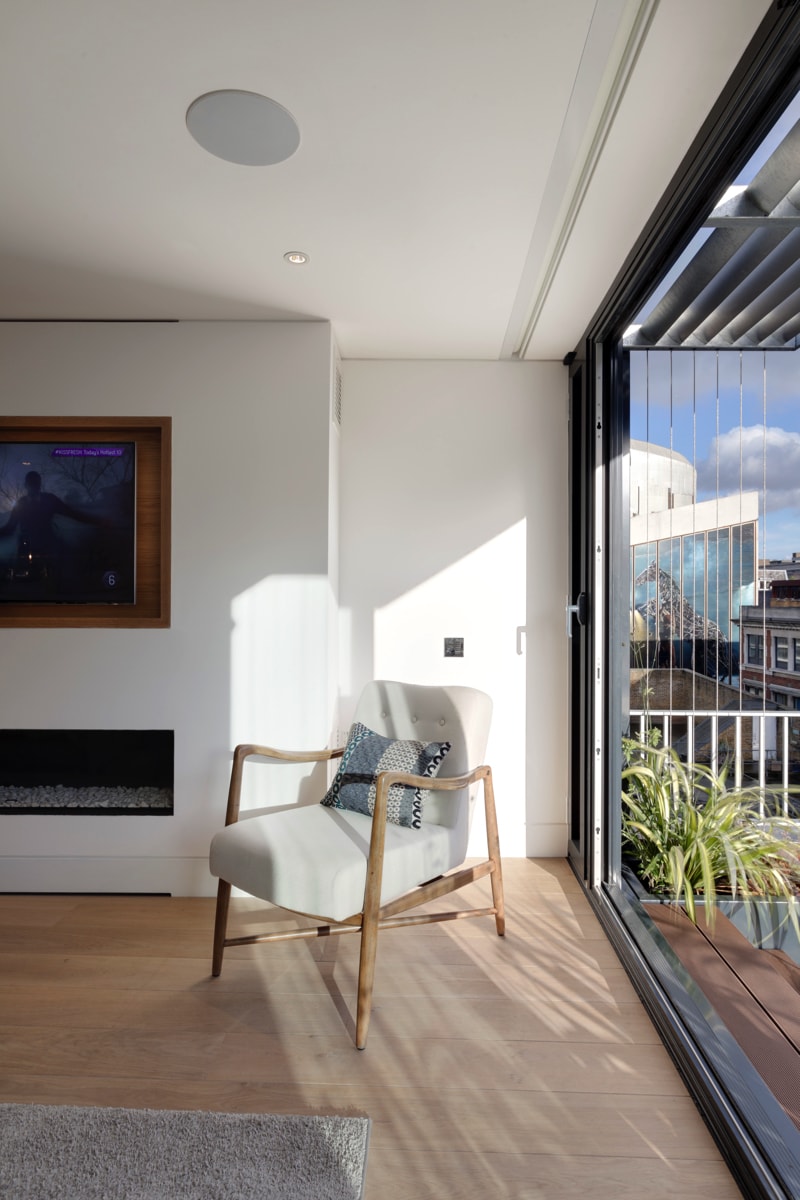 The client was delighted with the result, saying “The house they have designed is spectacular and agents and others have all commented on its brilliant design and have said it’s the best freehold house in Covent Garden. The design was inspired and again the attention to detail was so impressive.”
The client was delighted with the result, saying “The house they have designed is spectacular and agents and others have all commented on its brilliant design and have said it’s the best freehold house in Covent Garden. The design was inspired and again the attention to detail was so impressive.”
Architecture has the power to transform environments and quality of life.
FORMstudio aims to create places that can be inhabited and experienced by people in a natural and instinctive way. Enjoyable places with a tranquil sense of simplicity, which create a supportive and uplifting backdrop for life.
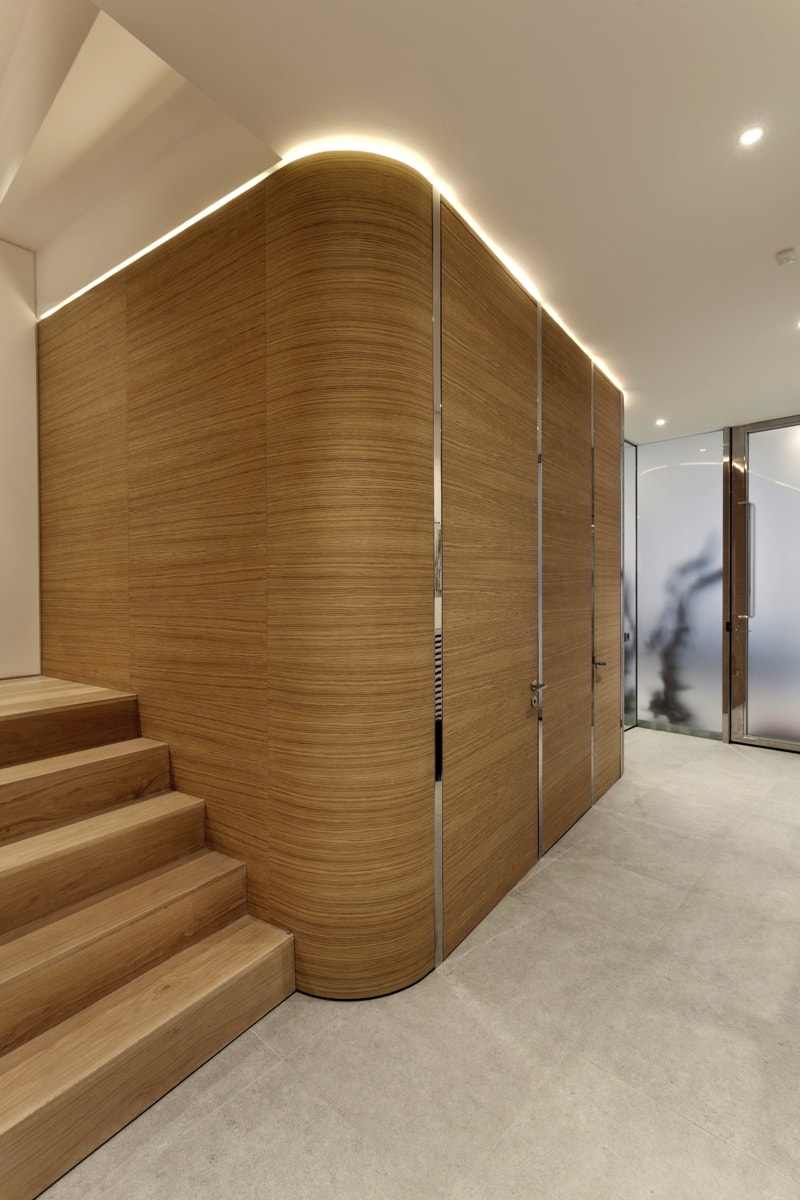 Individual solutions are developed for clients which are an intelligent, inventive and sustainable response to the complex matrix of issues that shapes each project. Solutions with a lucidity and apparent simplicity which belie their underlying complexity.
Individual solutions are developed for clients which are an intelligent, inventive and sustainable response to the complex matrix of issues that shapes each project. Solutions with a lucidity and apparent simplicity which belie their underlying complexity.
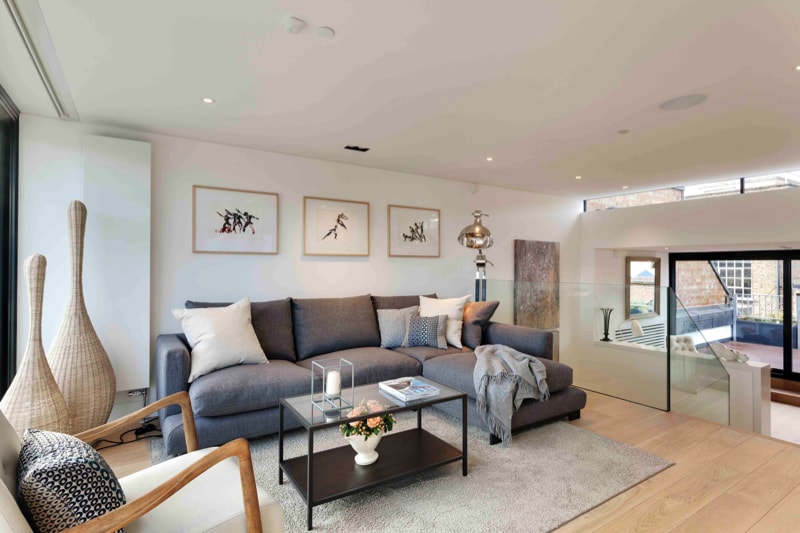 Listening, analysis, discussion and clarification are at the heart of an inclusive approach that recognises the fact that some of the best ideas are generated in the space between people rather than by individuals.
Listening, analysis, discussion and clarification are at the heart of an inclusive approach that recognises the fact that some of the best ideas are generated in the space between people rather than by individuals.
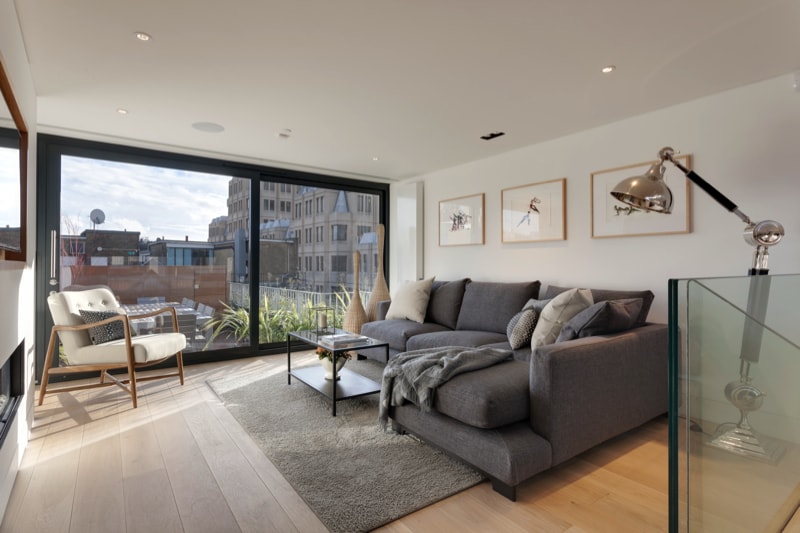 FORMstudio is an RIBA Chartered Architects practice based in London SE1. The practice offers a comprehensive range of services from feasibility and development analysis, through to full architectural/lead consultant roles and also interior design/space planning.
FORMstudio is an RIBA Chartered Architects practice based in London SE1. The practice offers a comprehensive range of services from feasibility and development analysis, through to full architectural/lead consultant roles and also interior design/space planning.
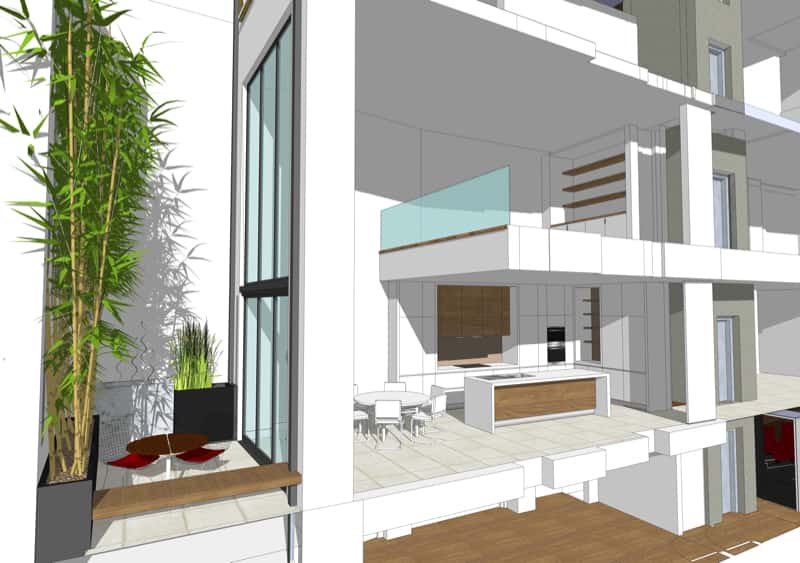 For more see: www.formstudio.co.uk
For more see: www.formstudio.co.uk
Photo credits: Bruce Hemming Photography
If You Like This Feature, Here Are Other Architectural Homes You May Like:
- House K Stocksund, Stockholm
- A Concrete Cut House Project
- Castle Rock Beach House
- Fall House, Big Sur, California
- Mirror House Project, Poland
- Tahoe Ski Retreat
